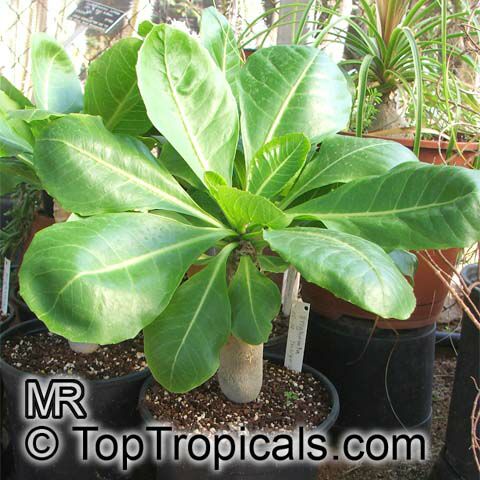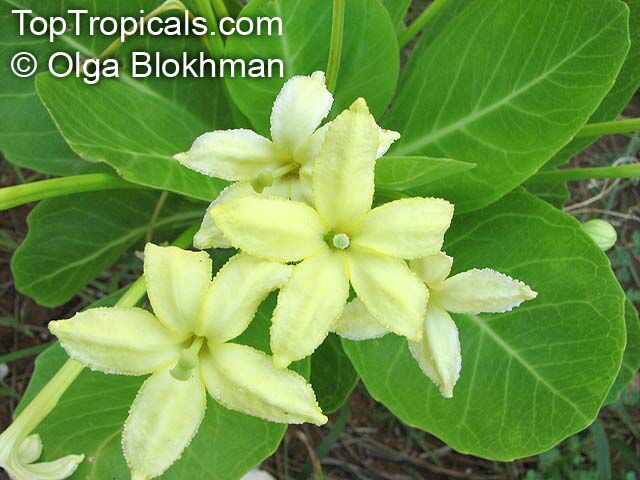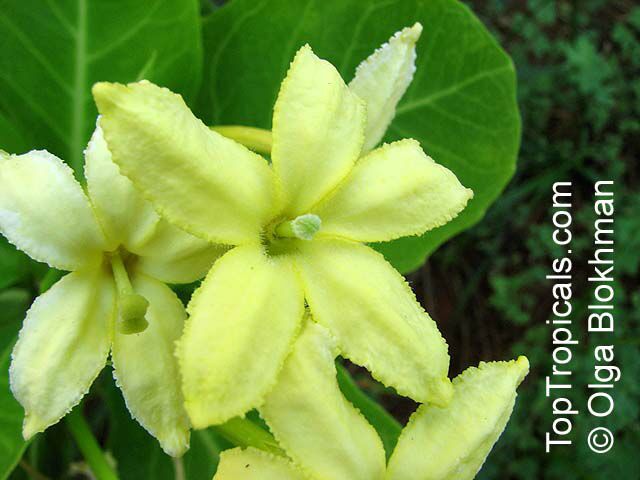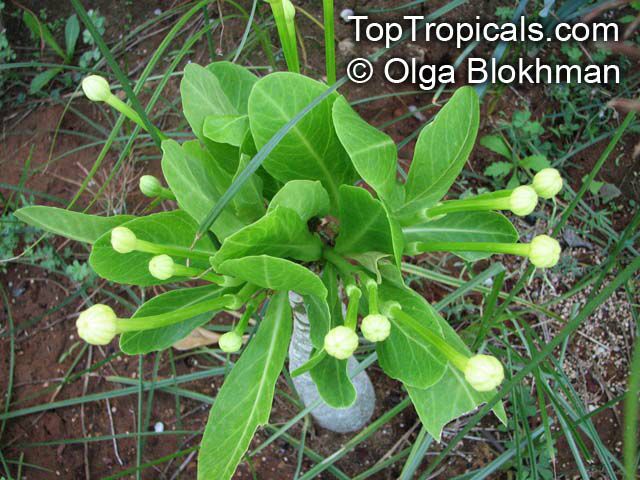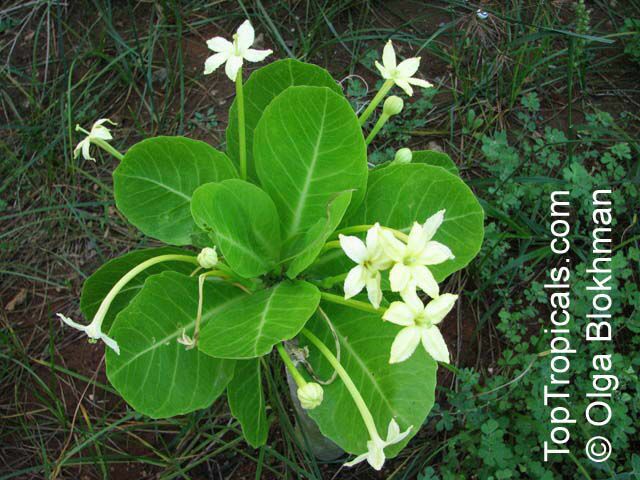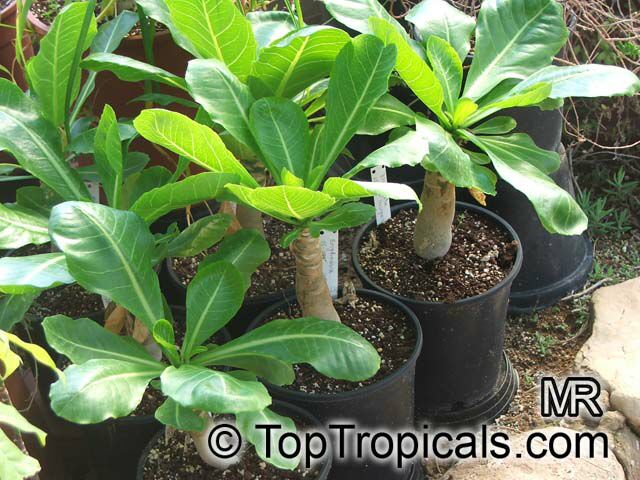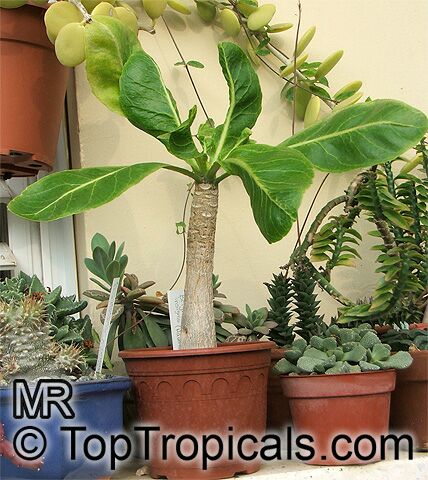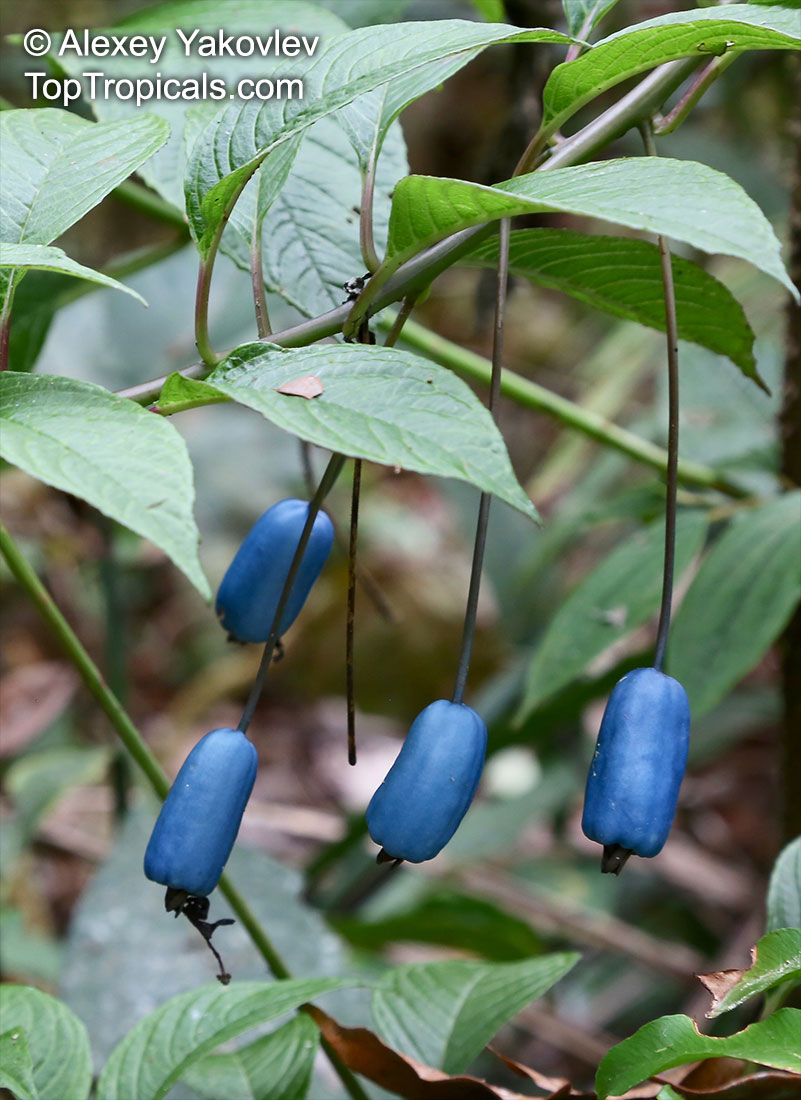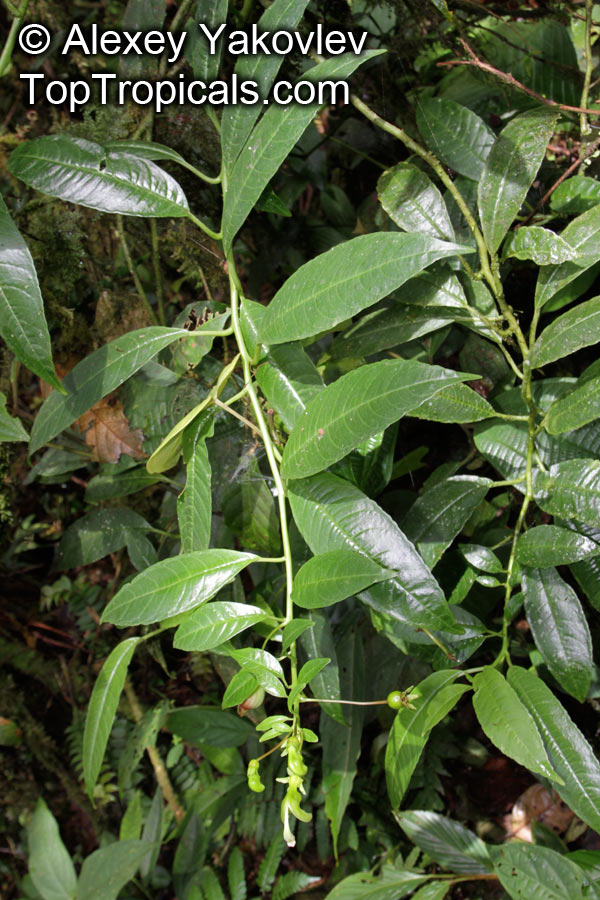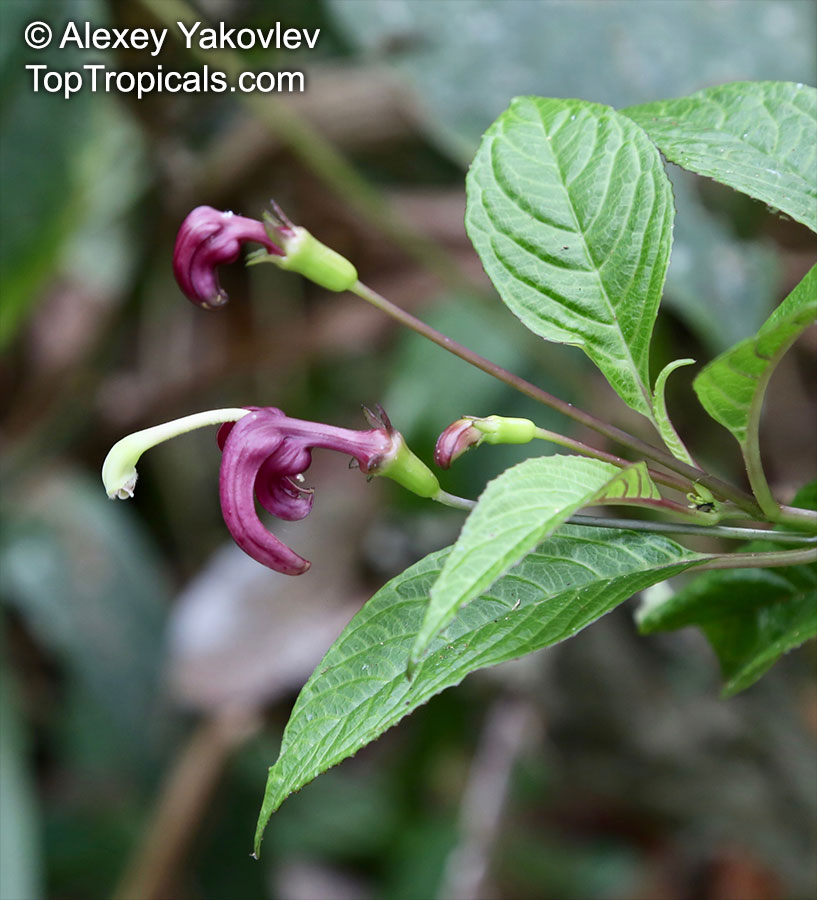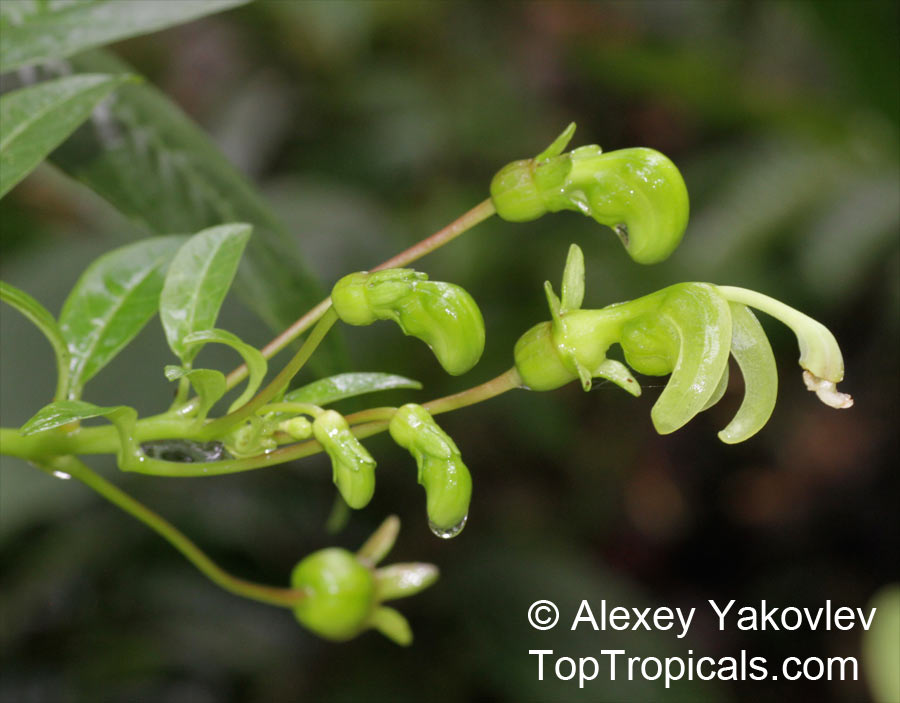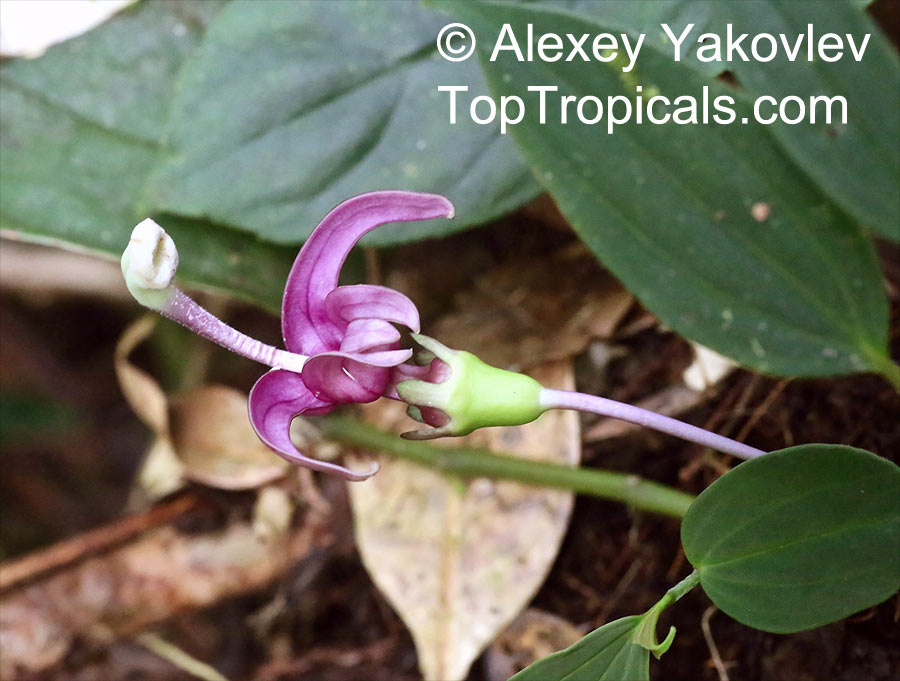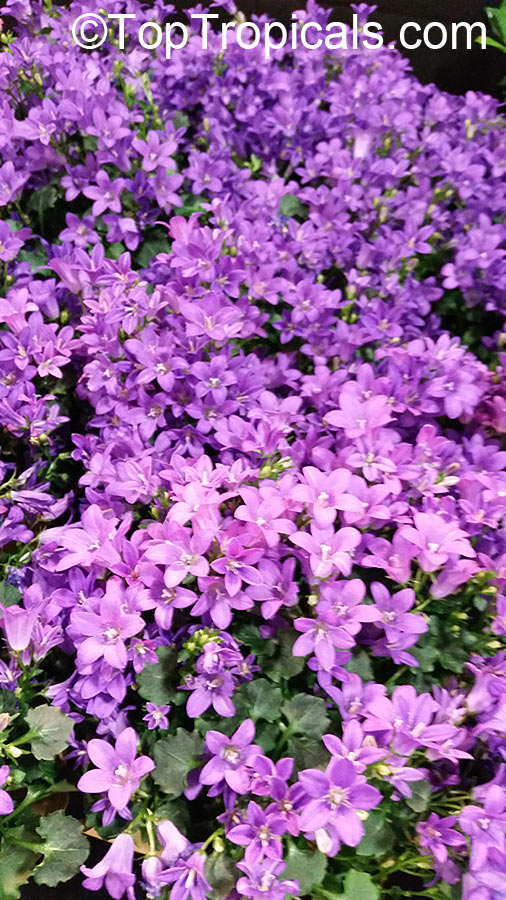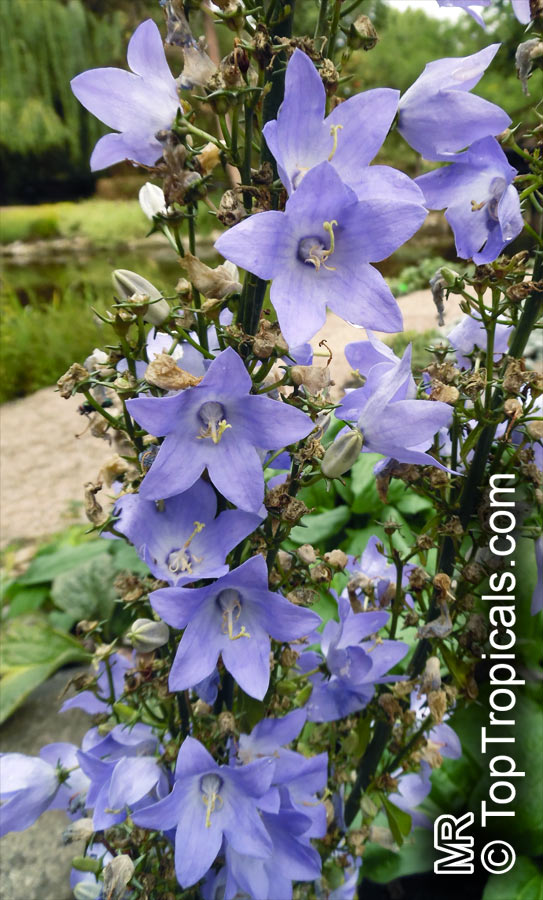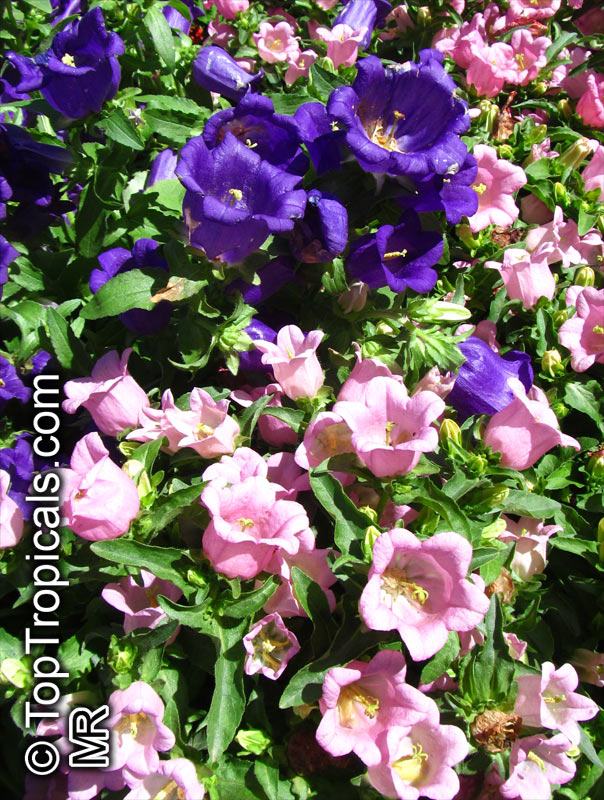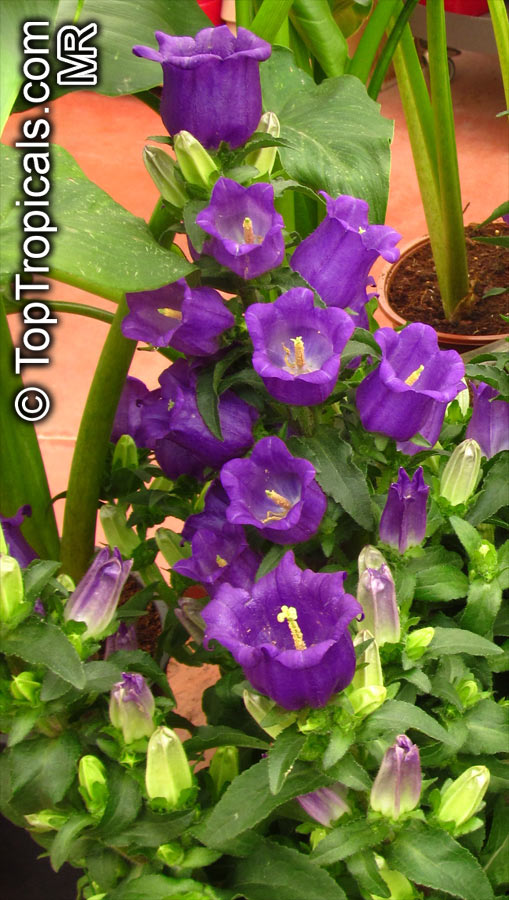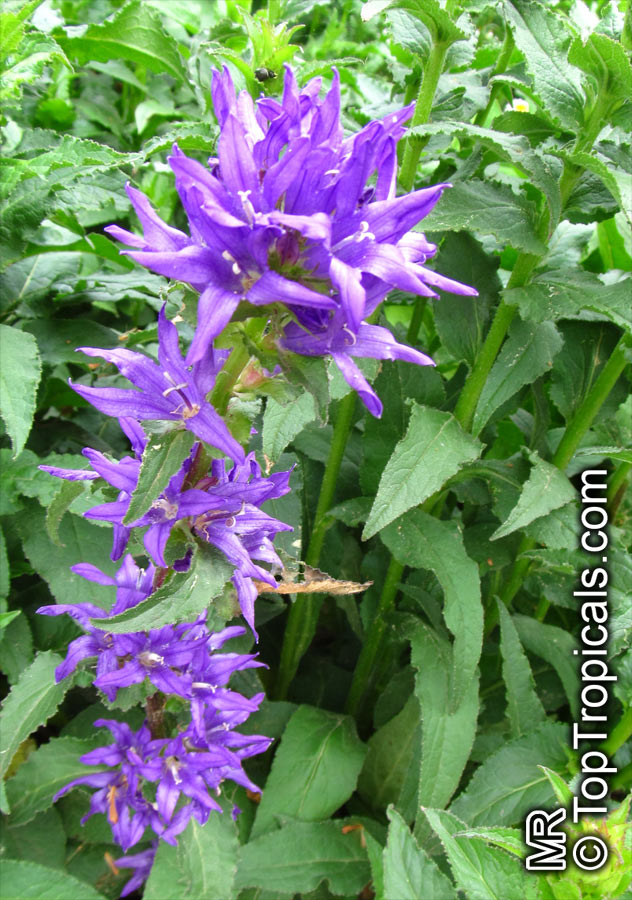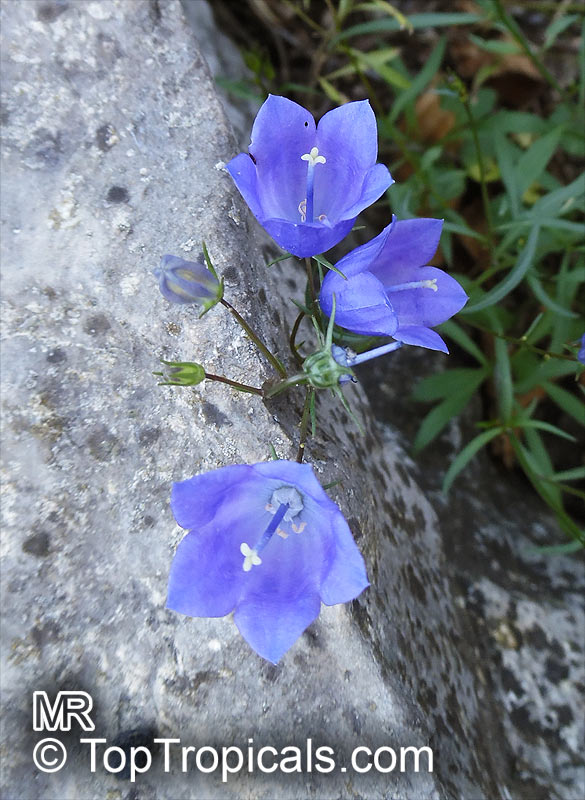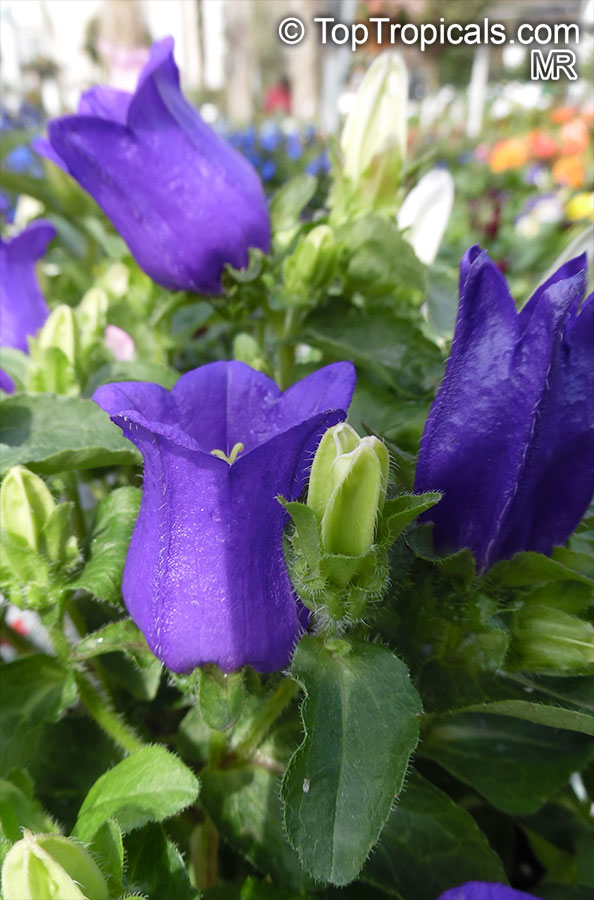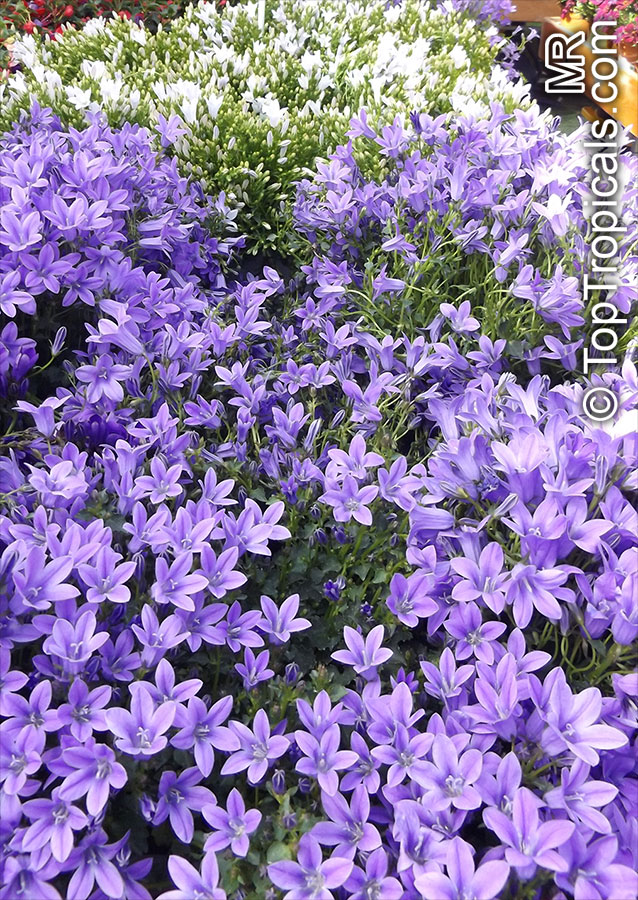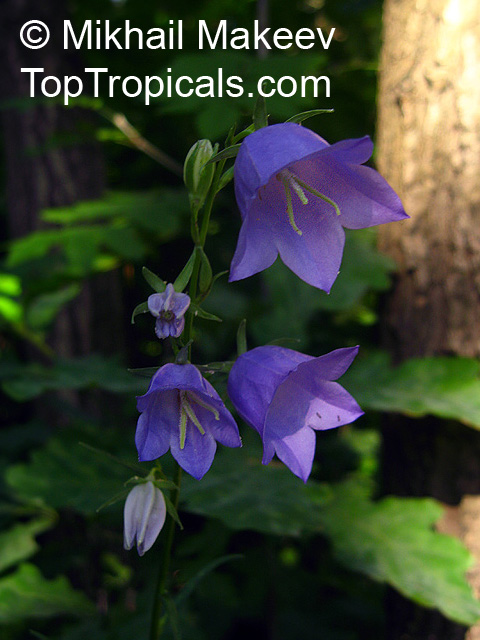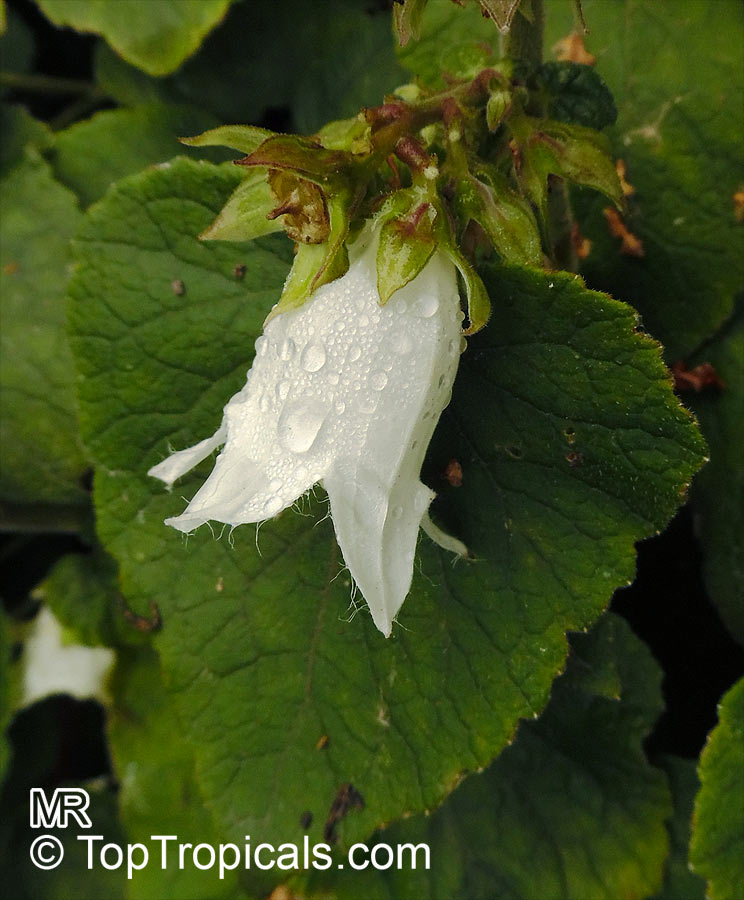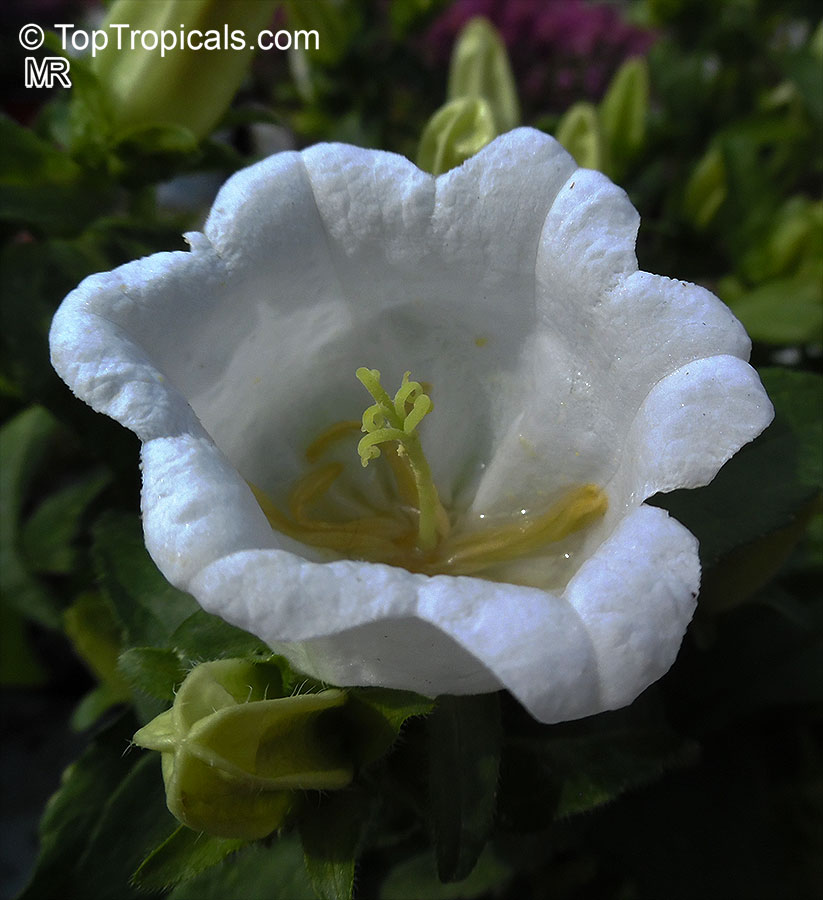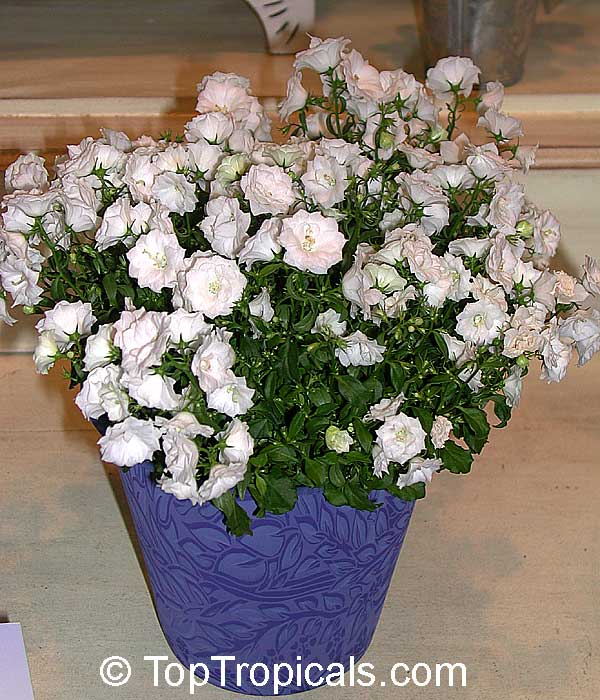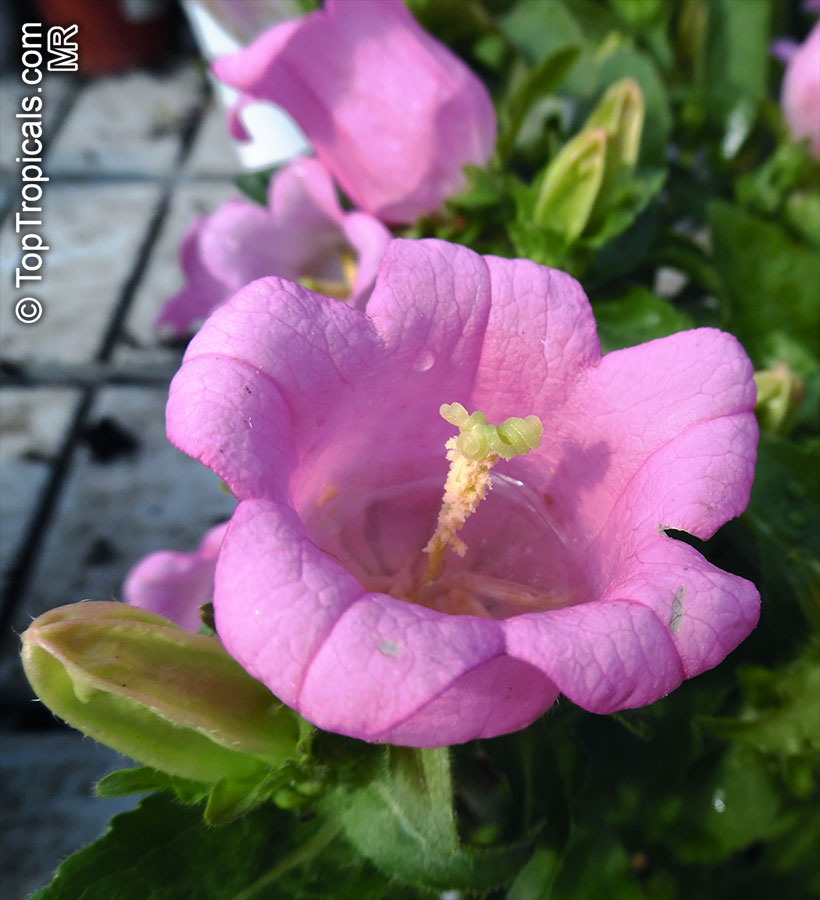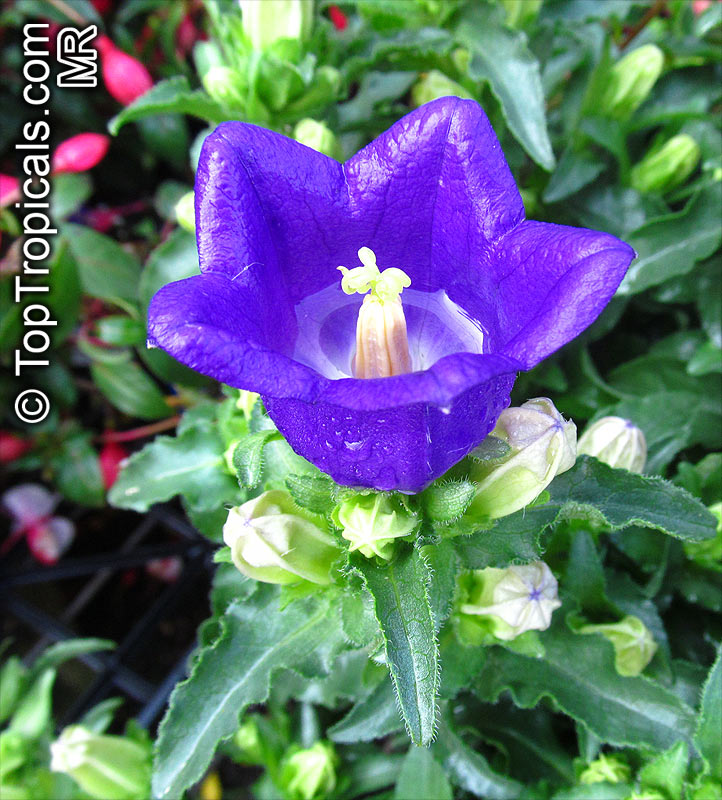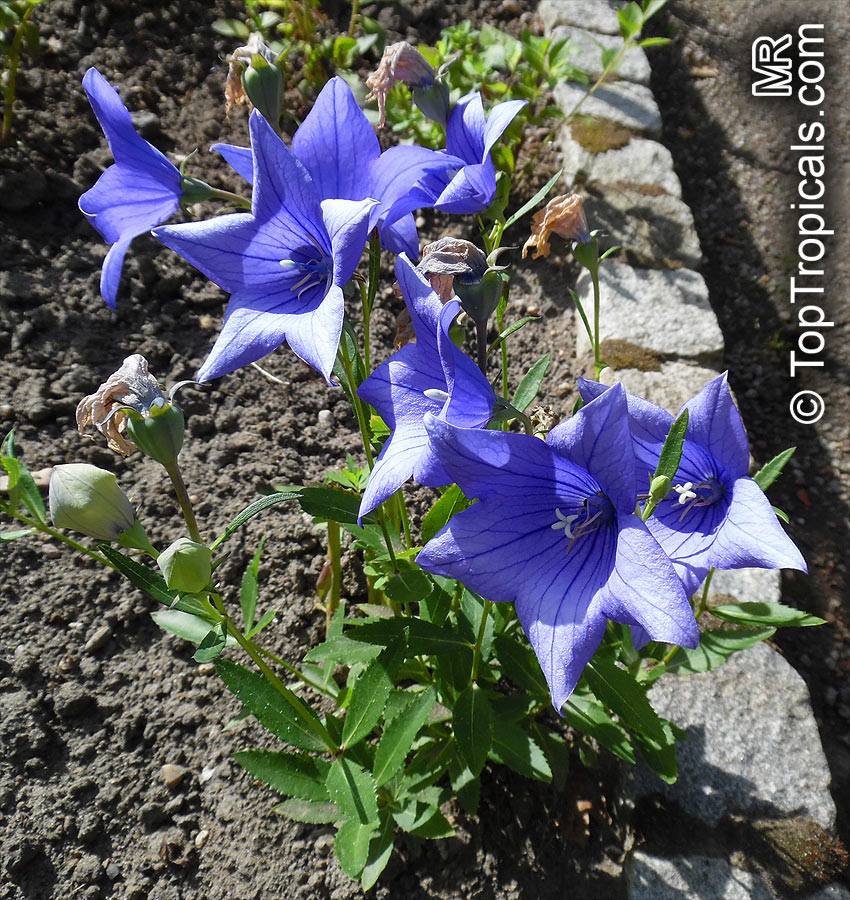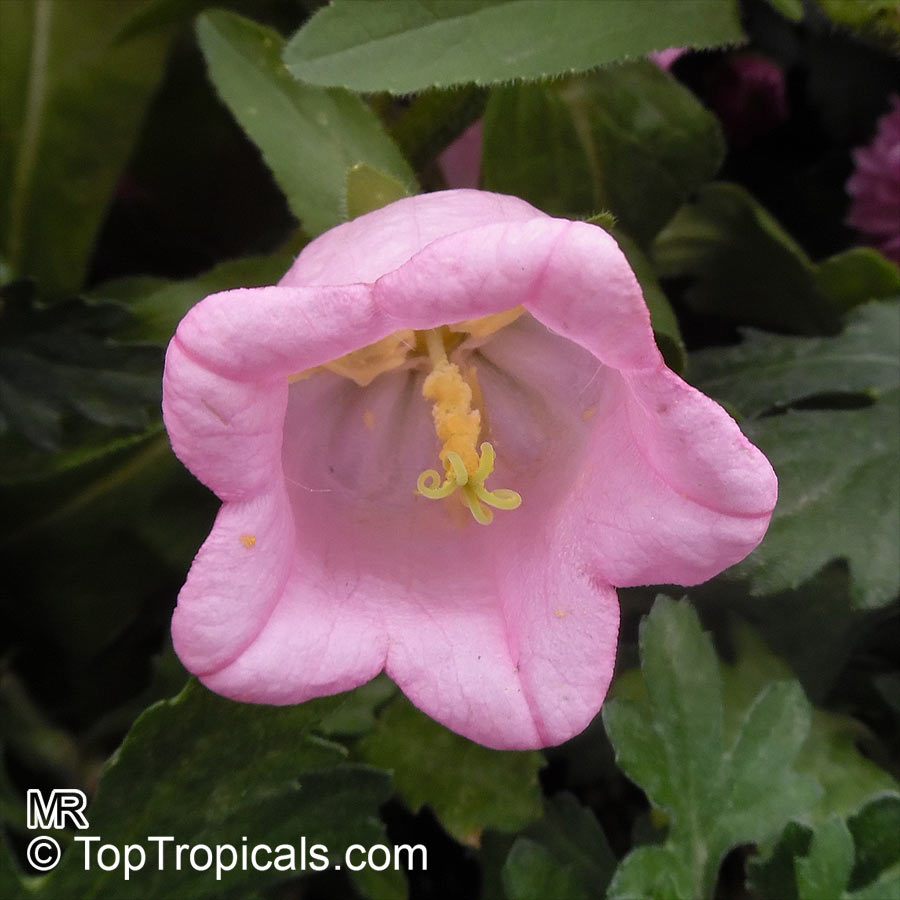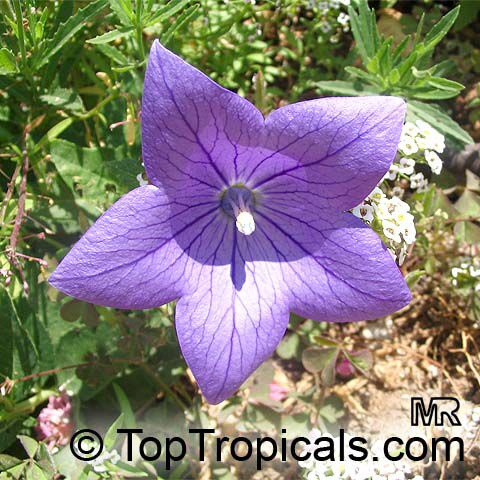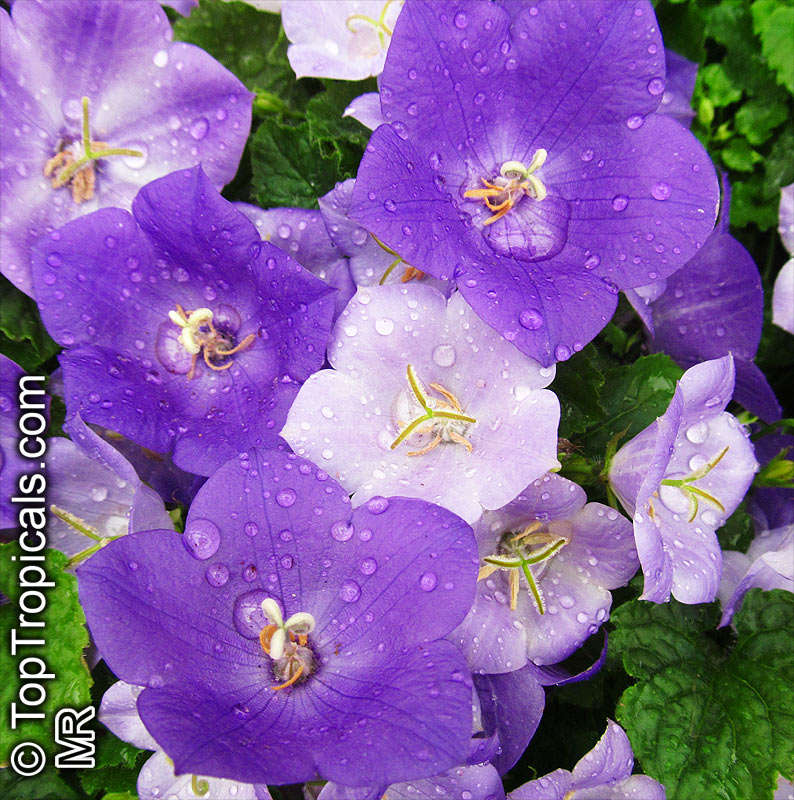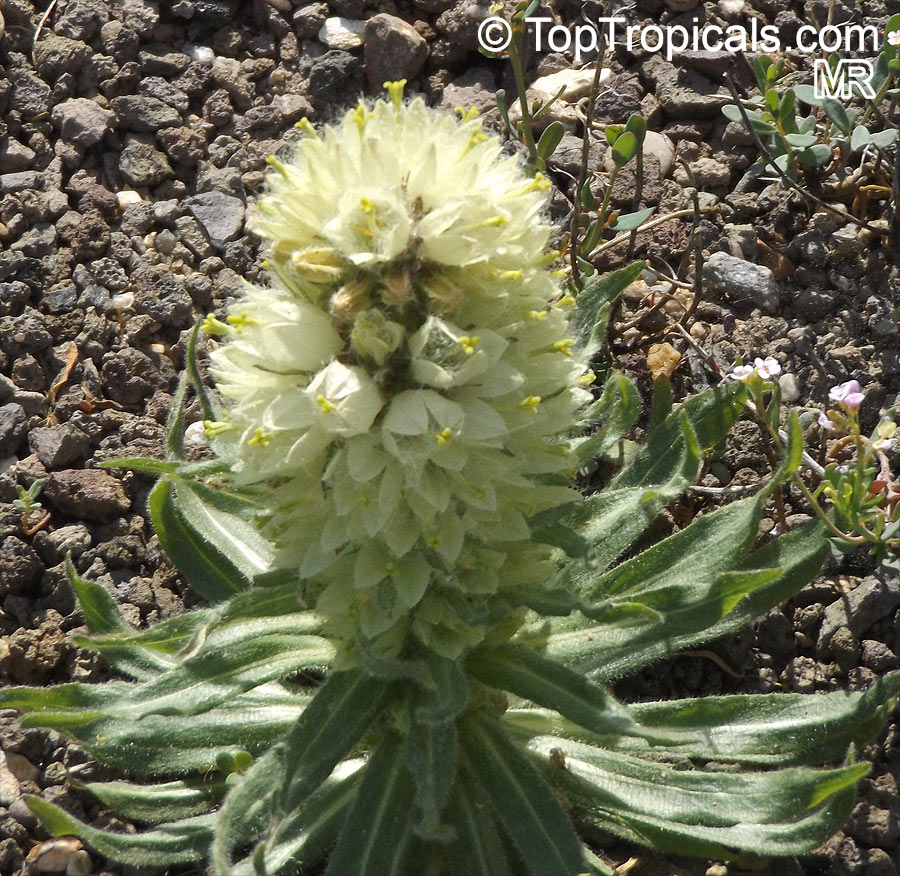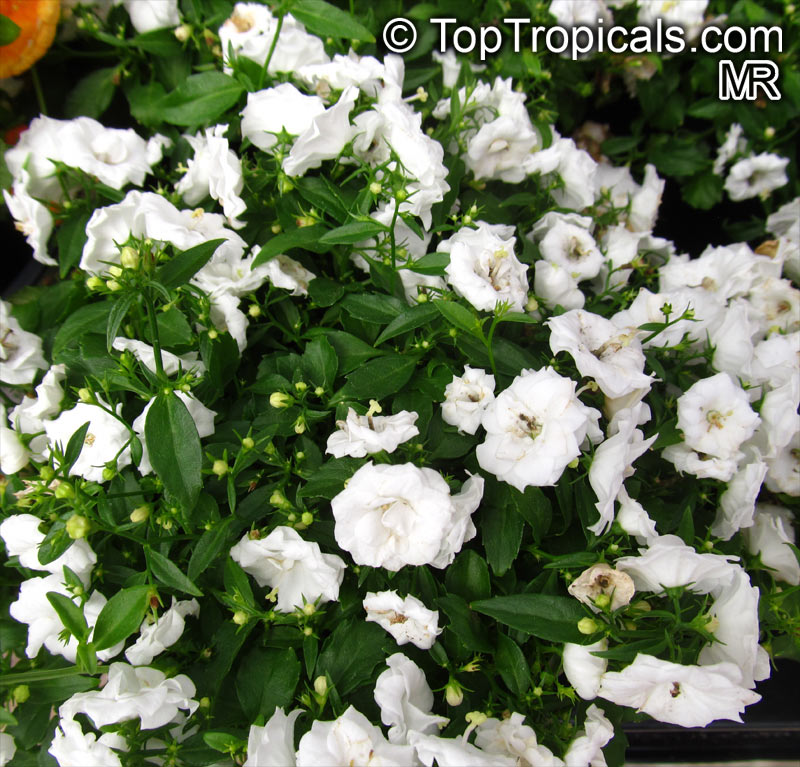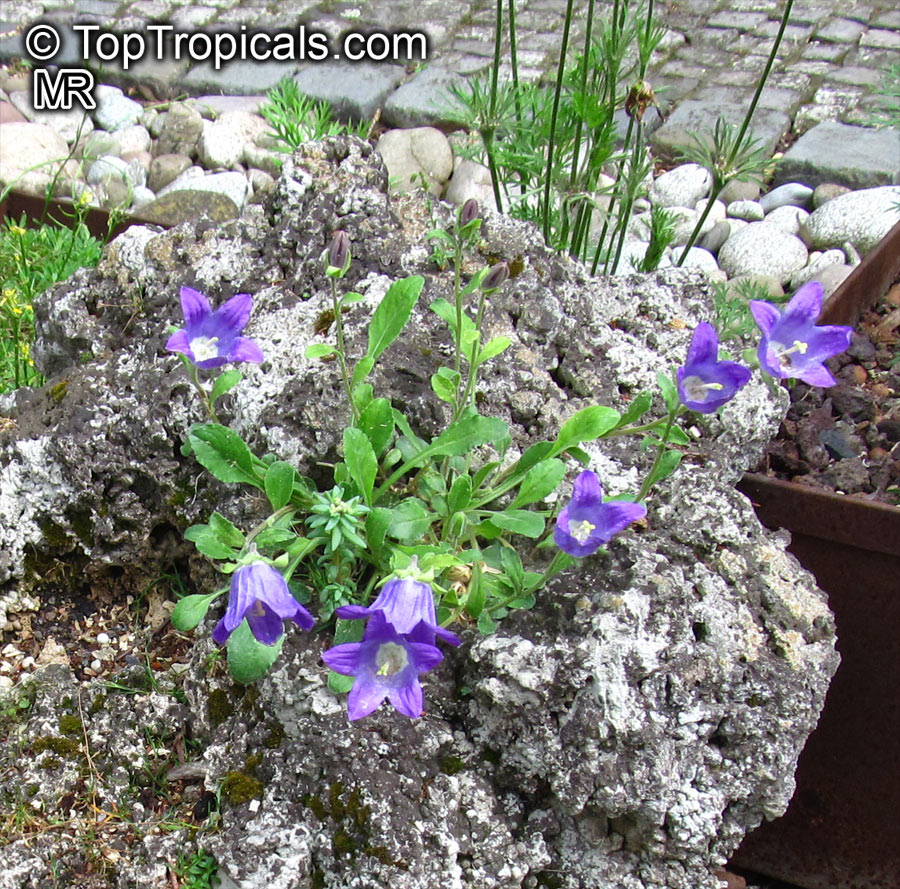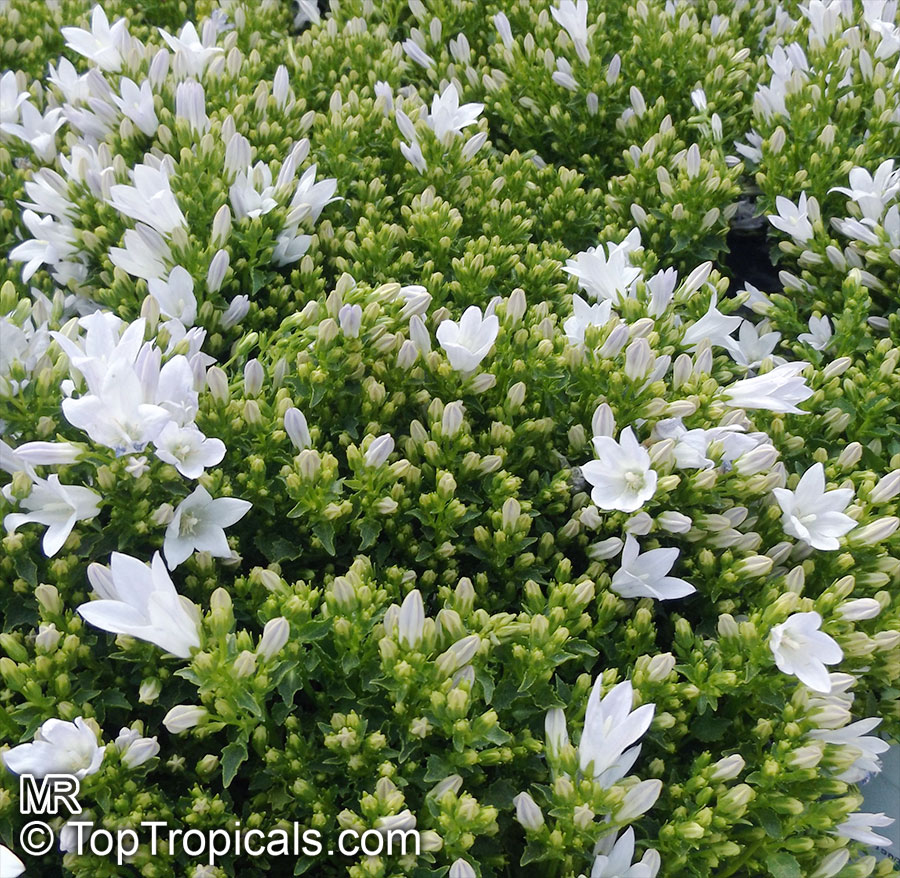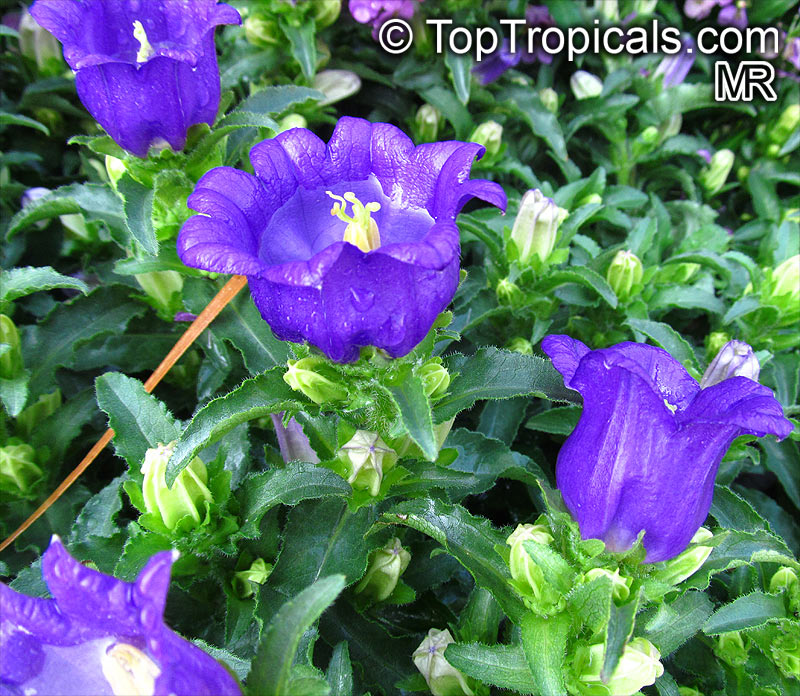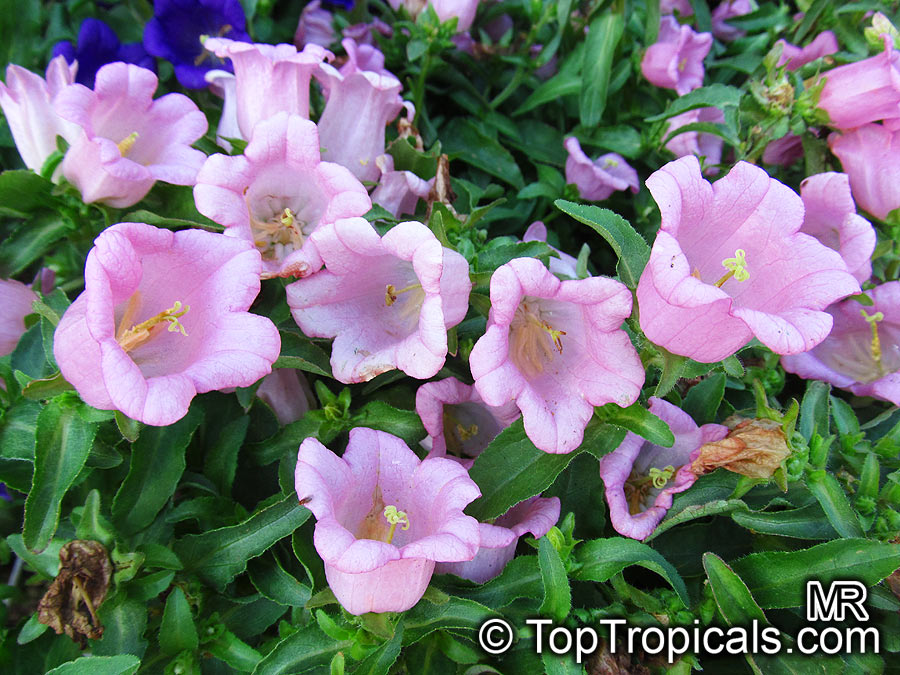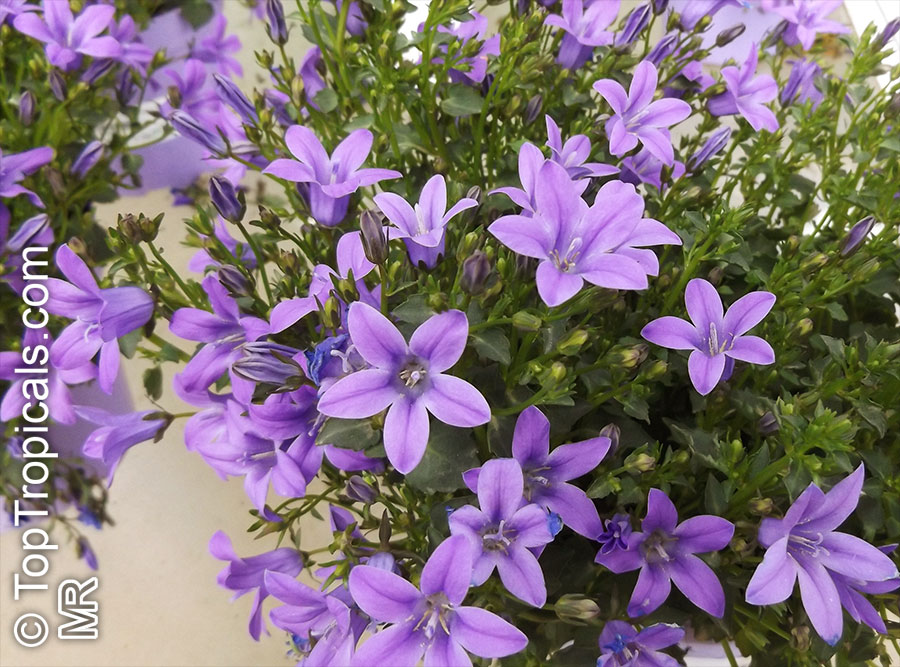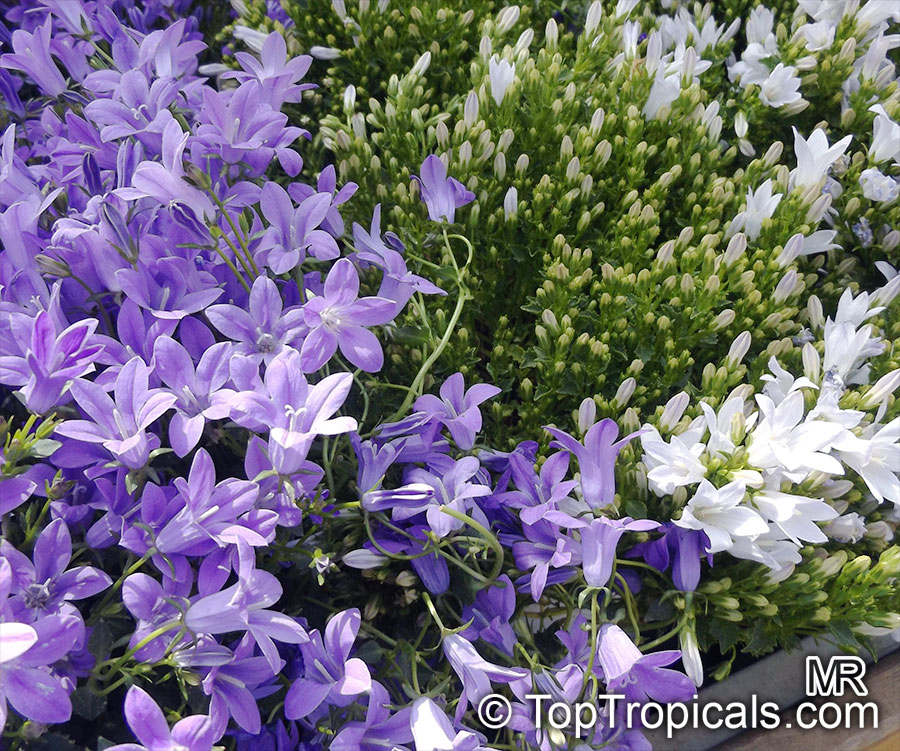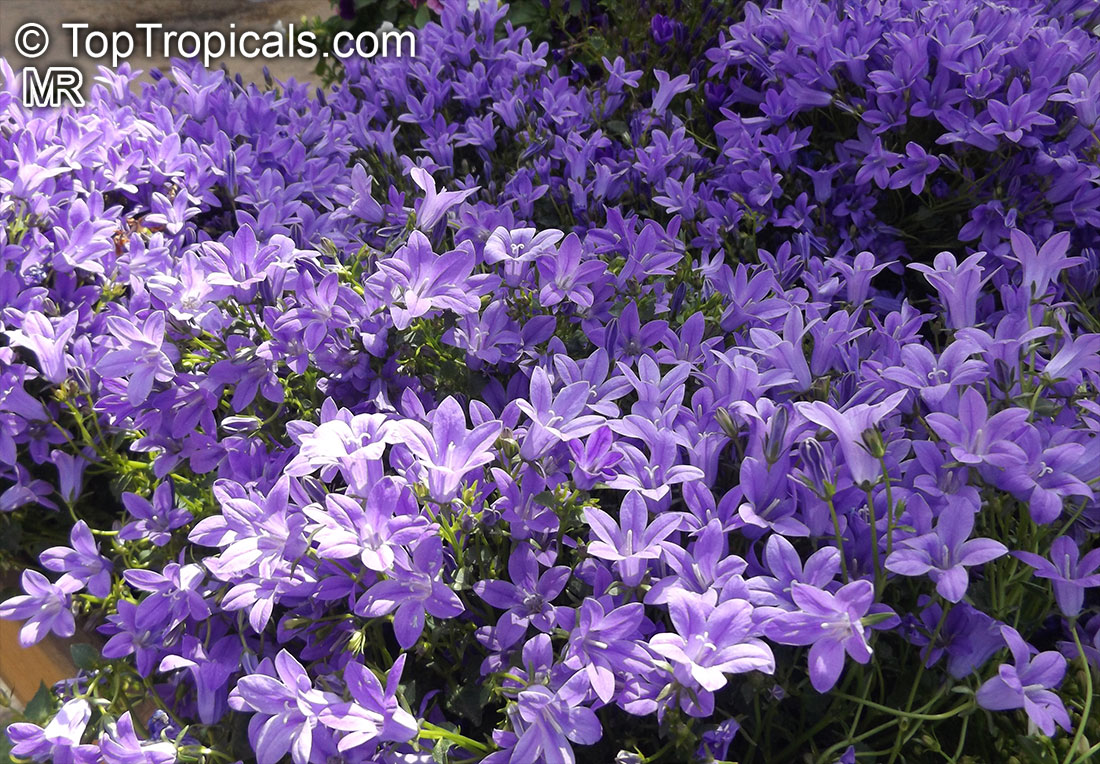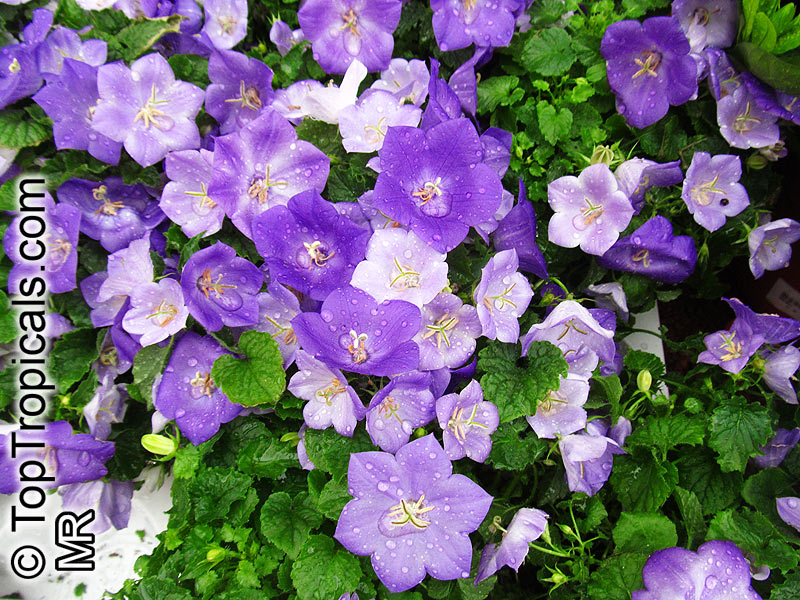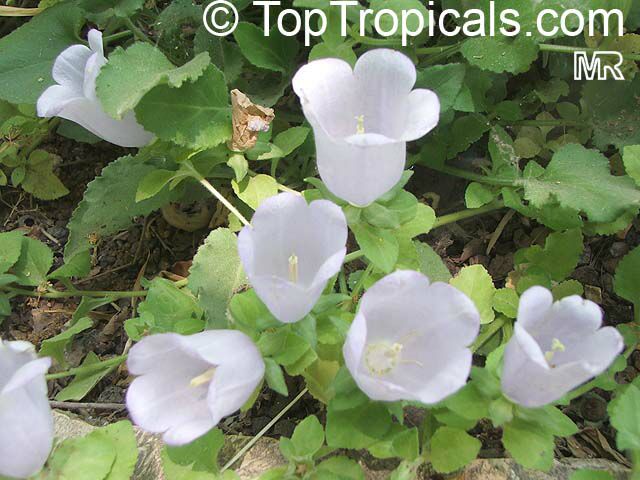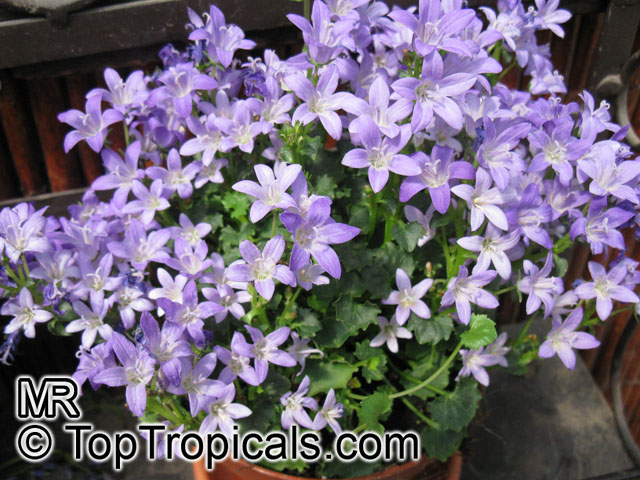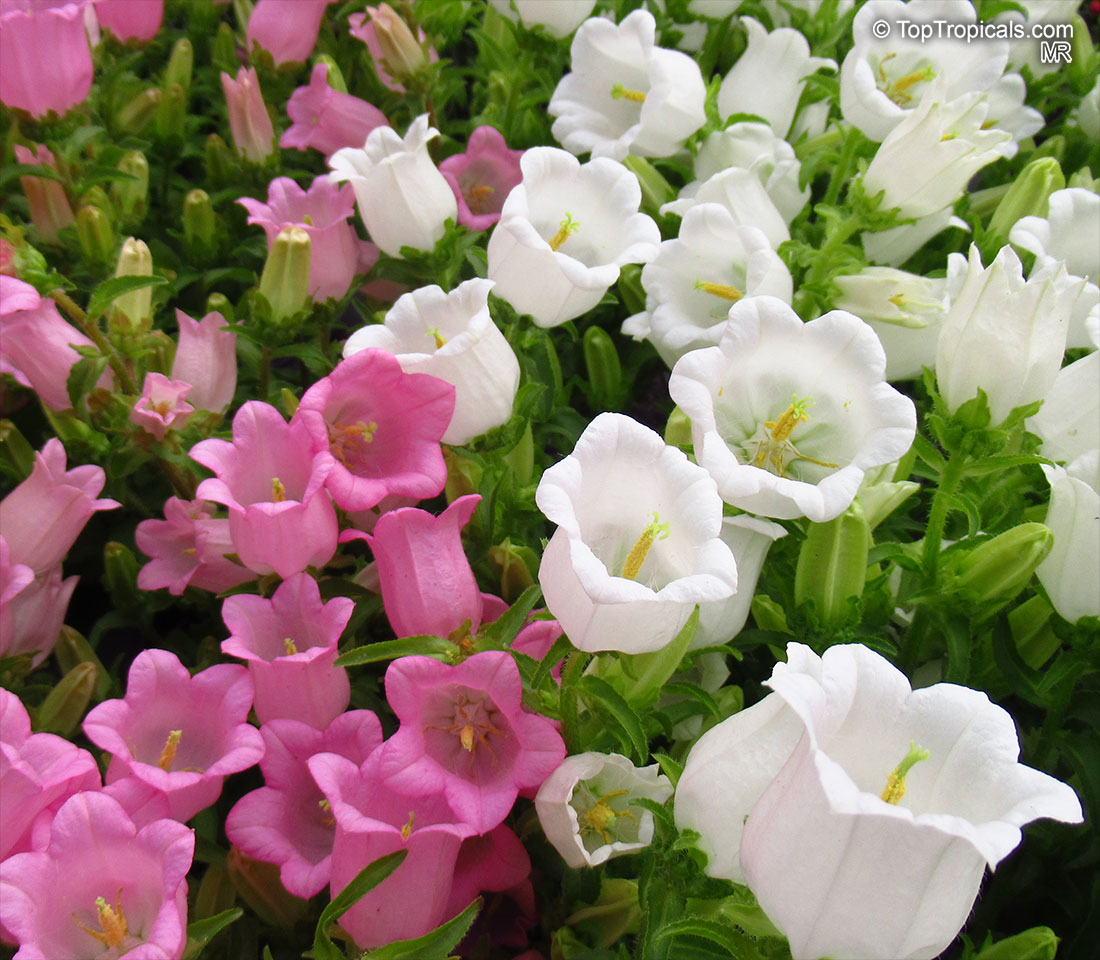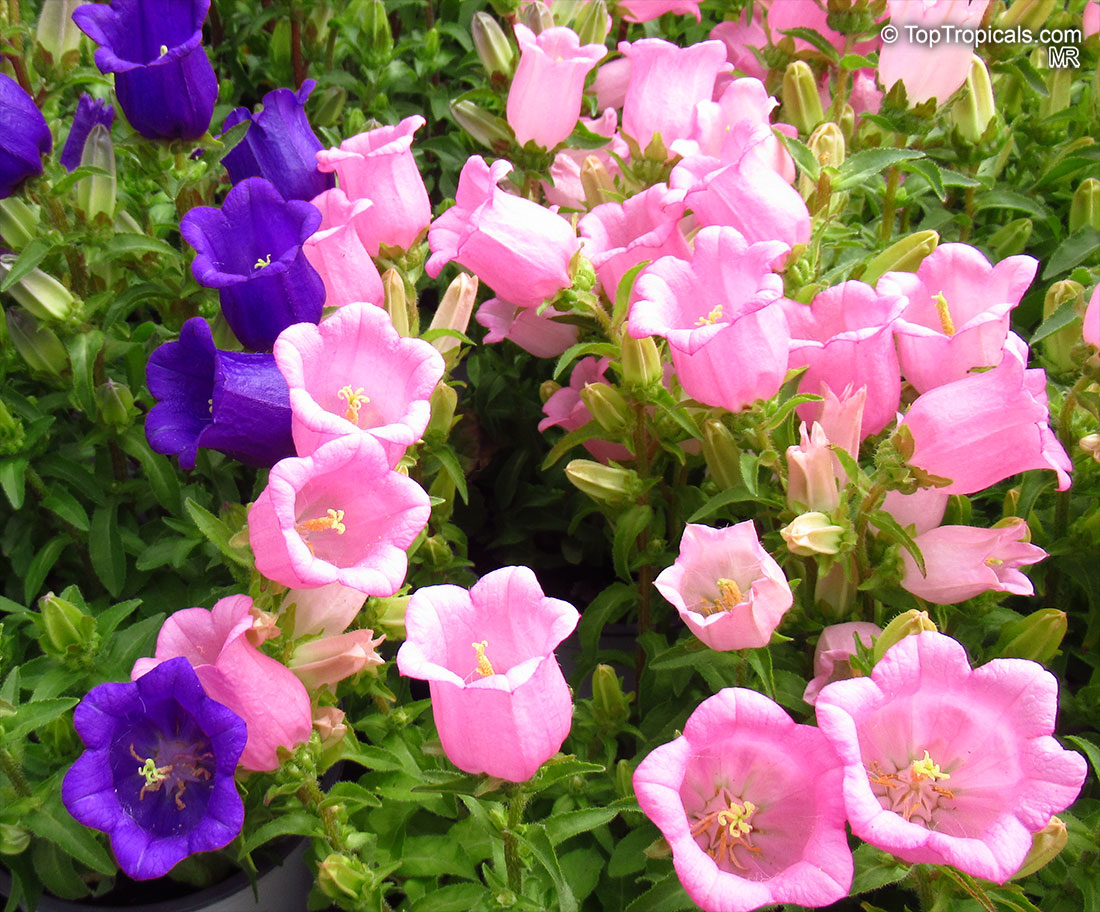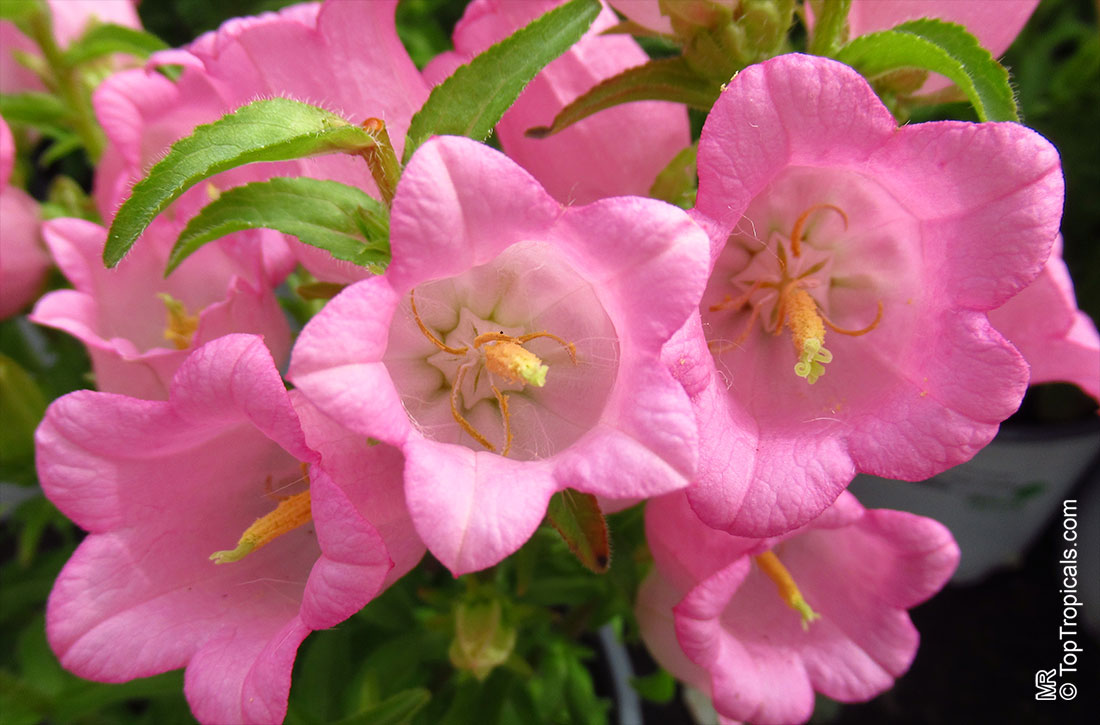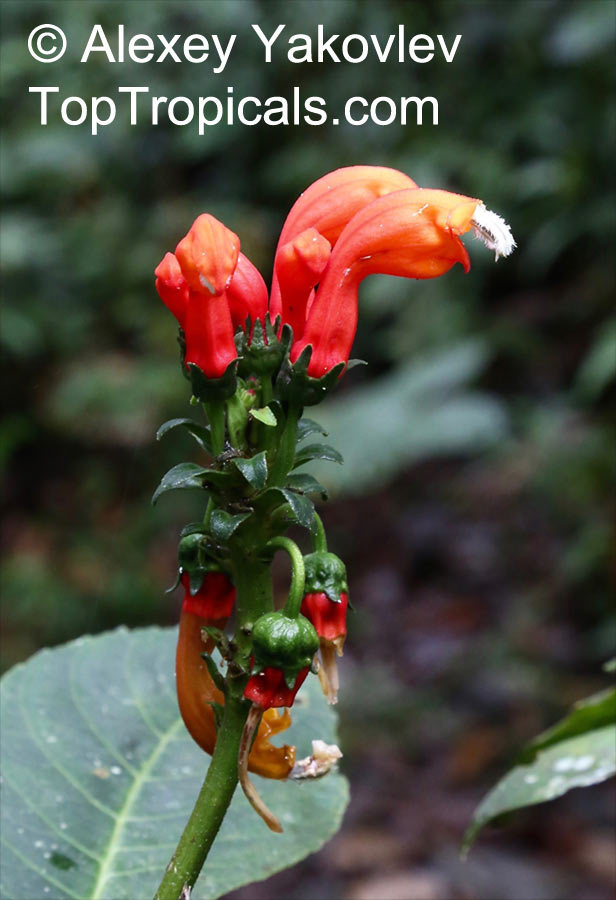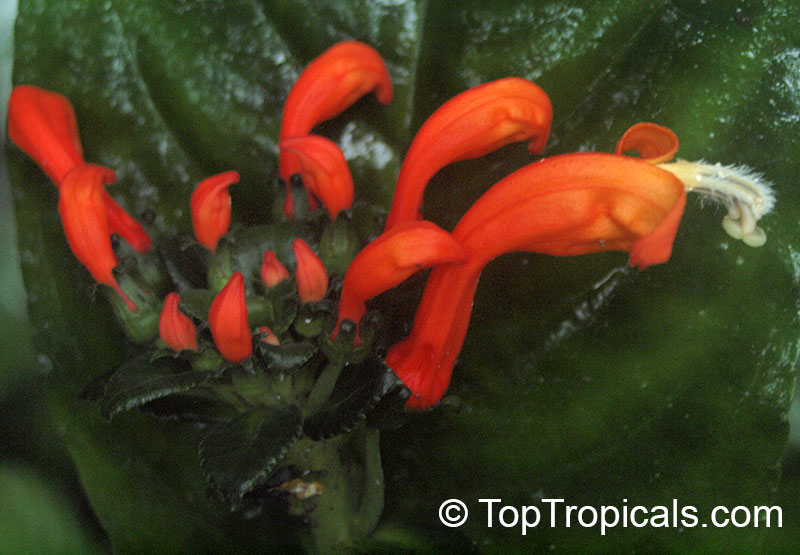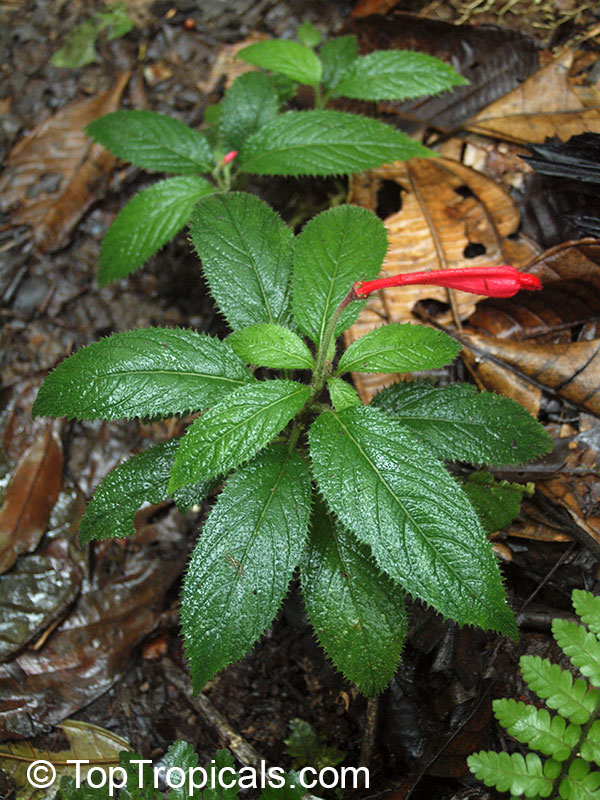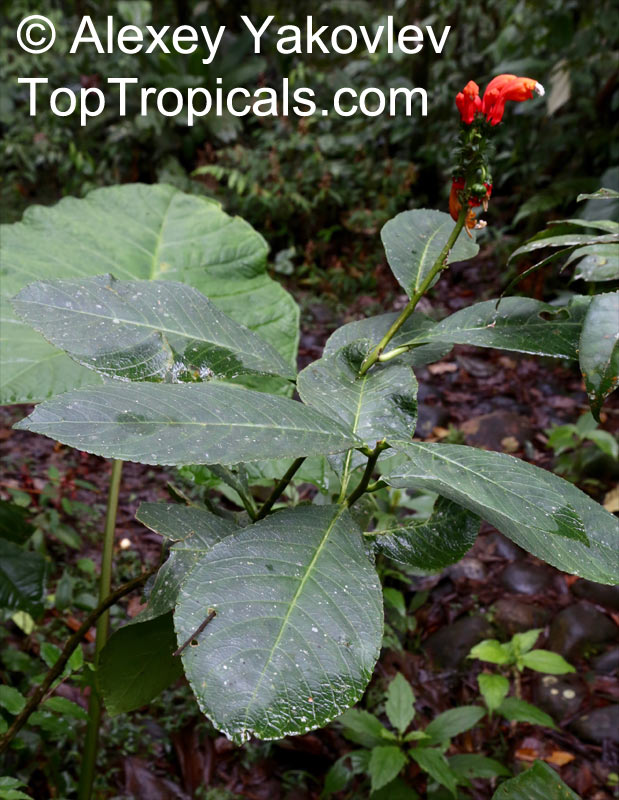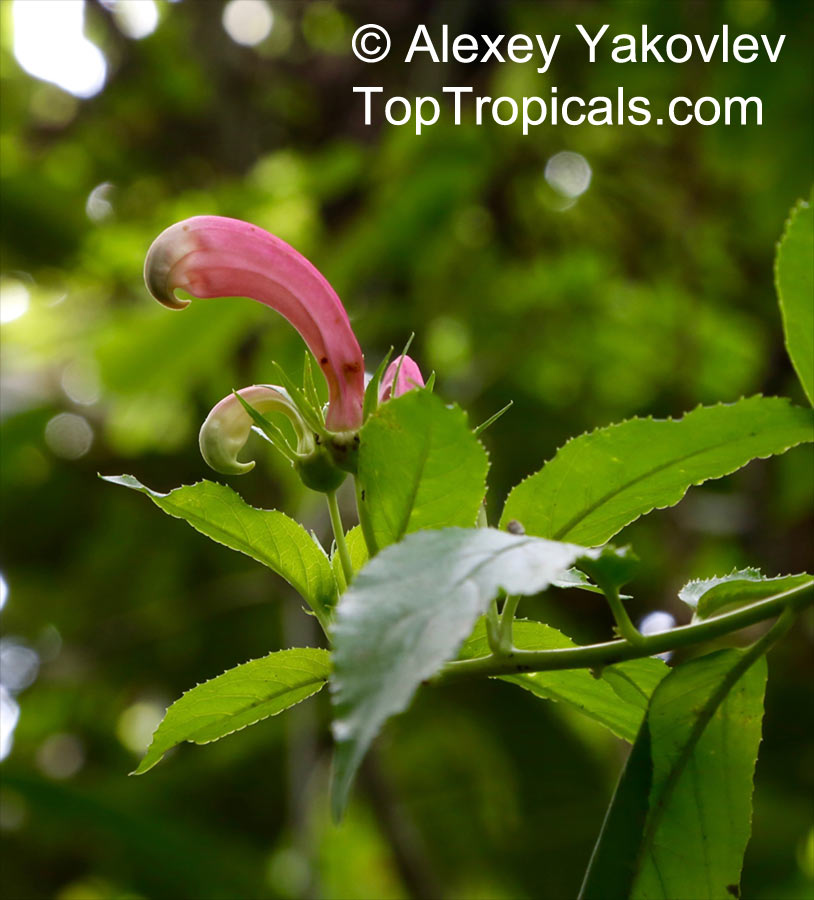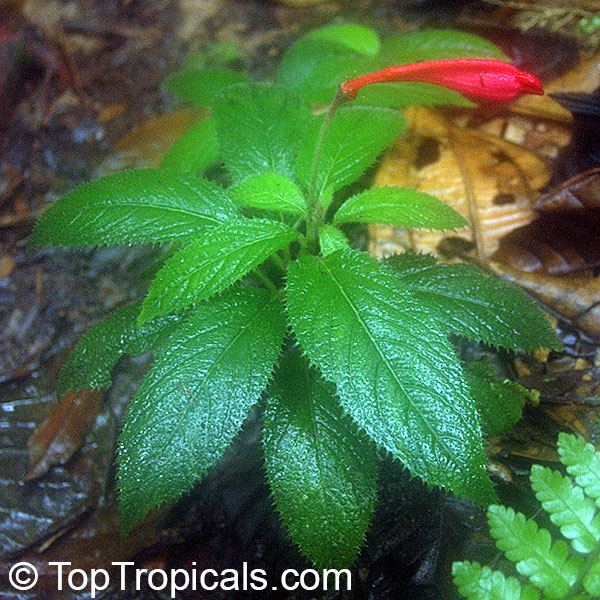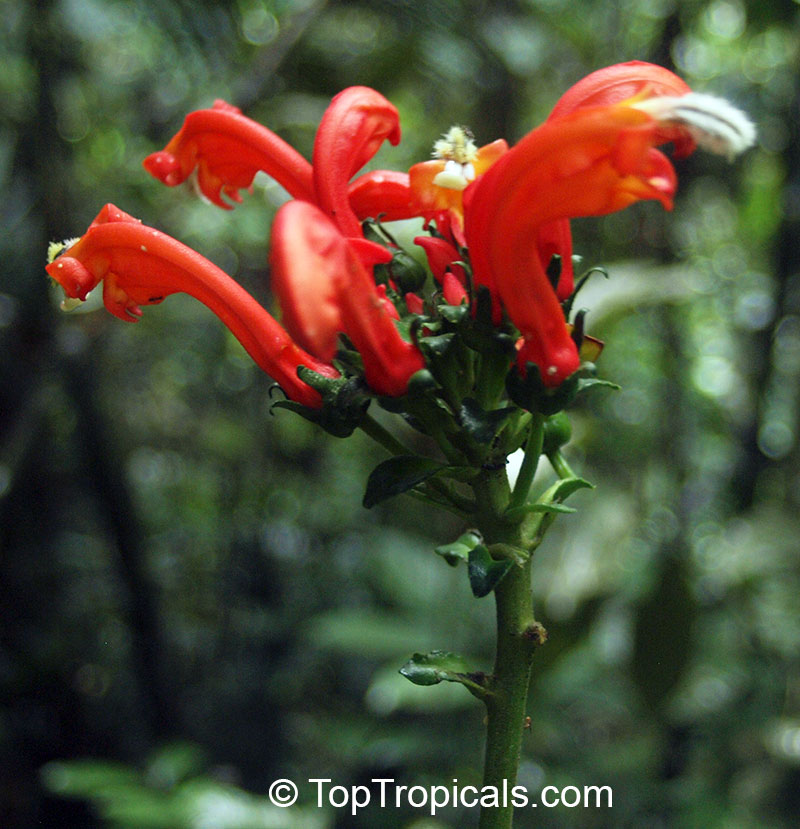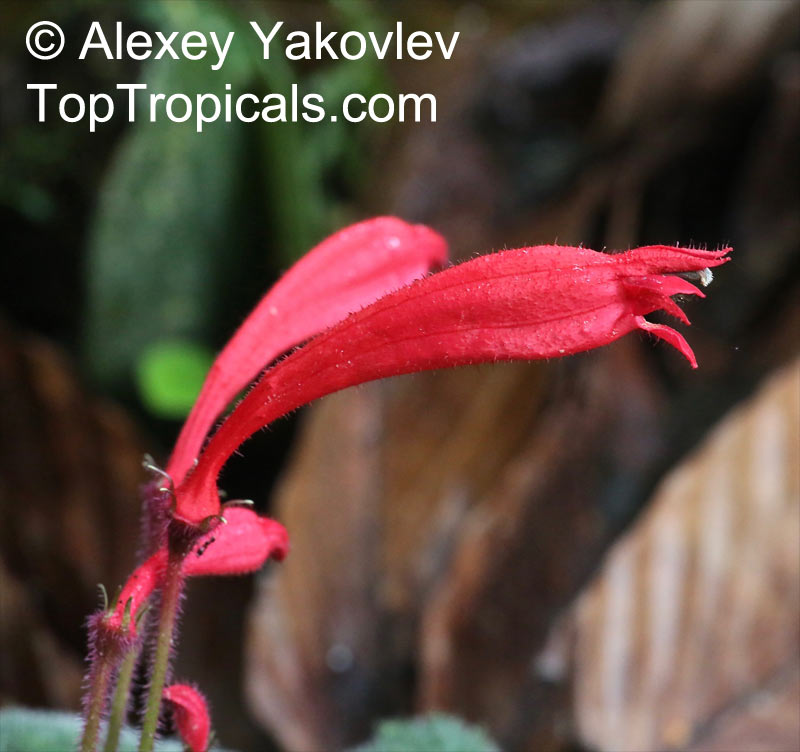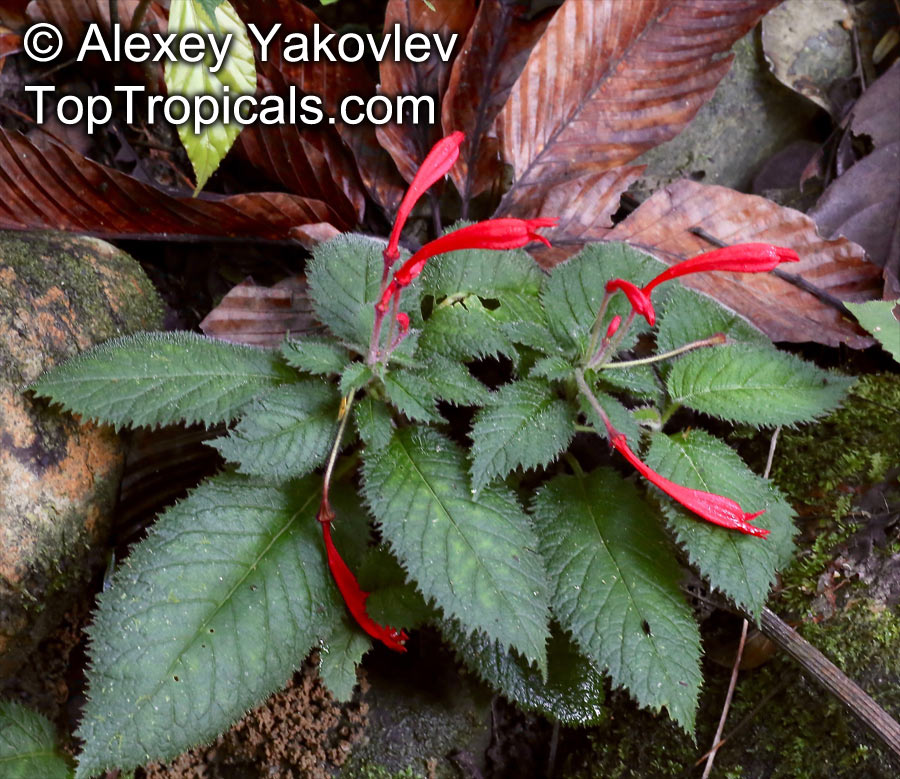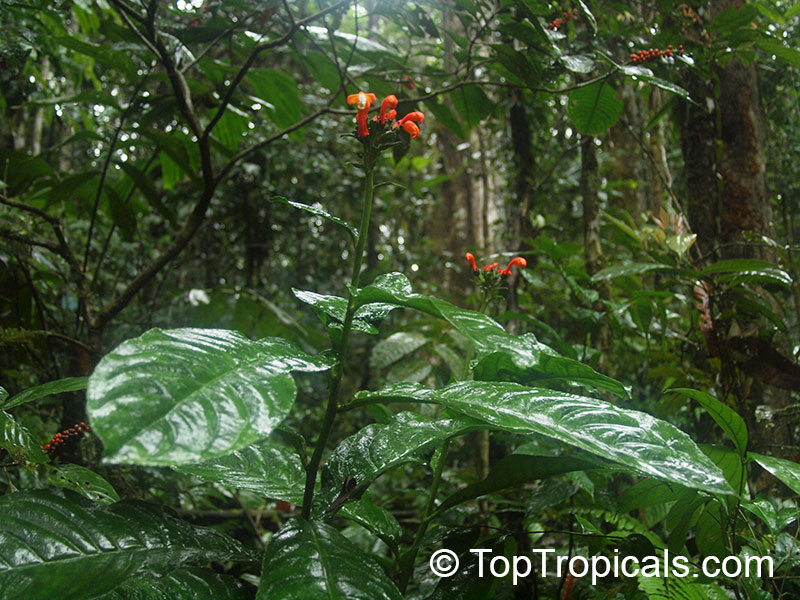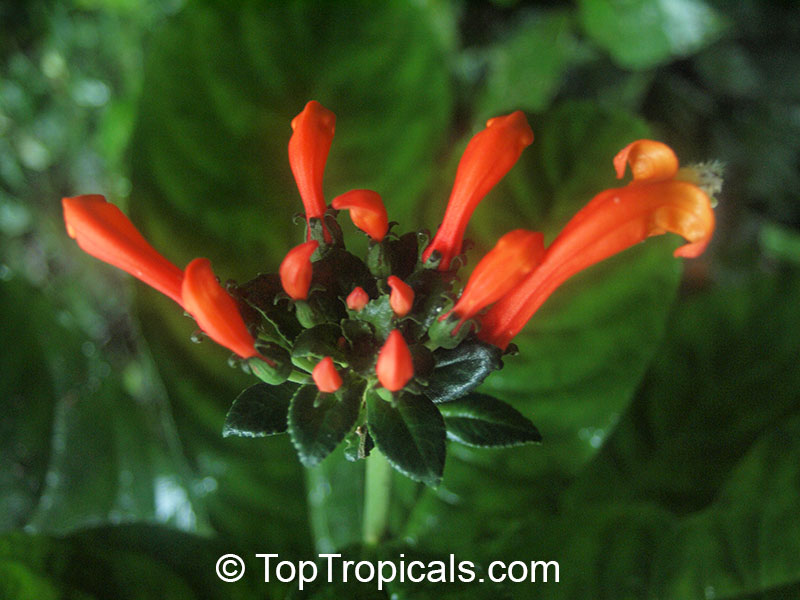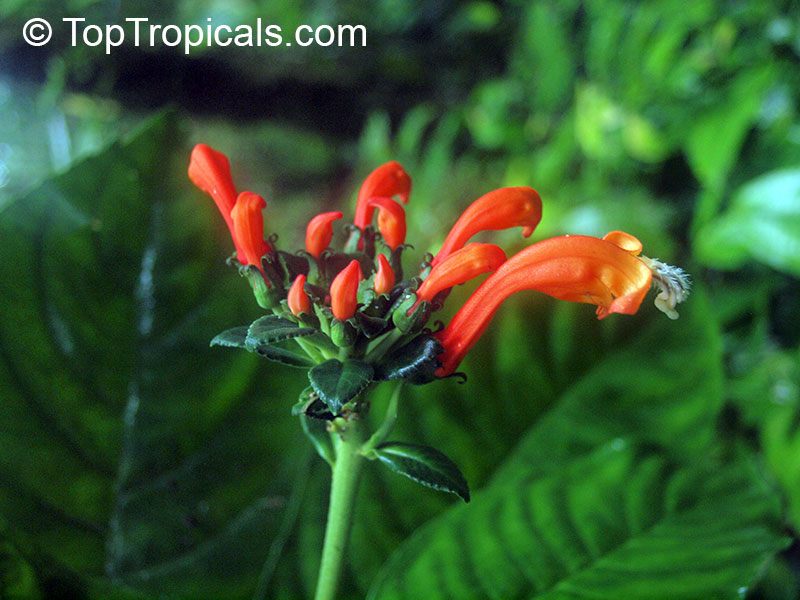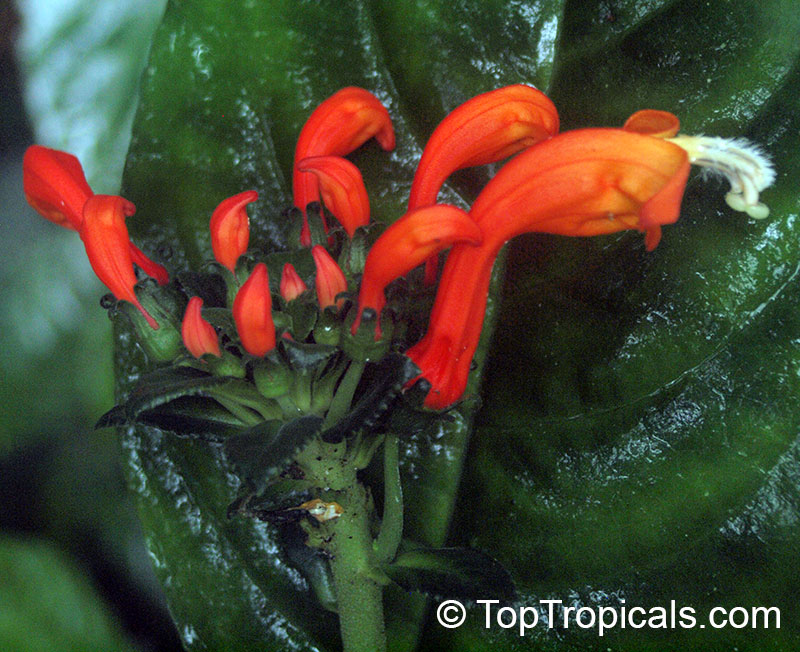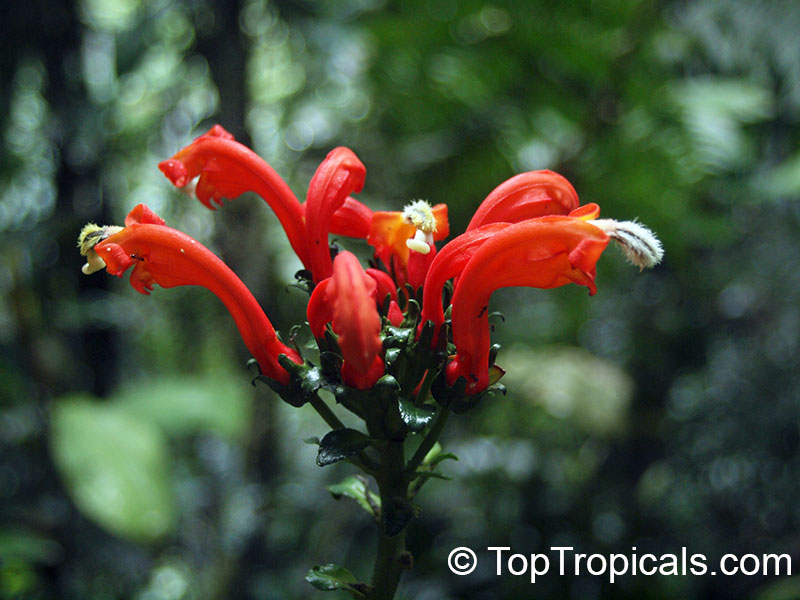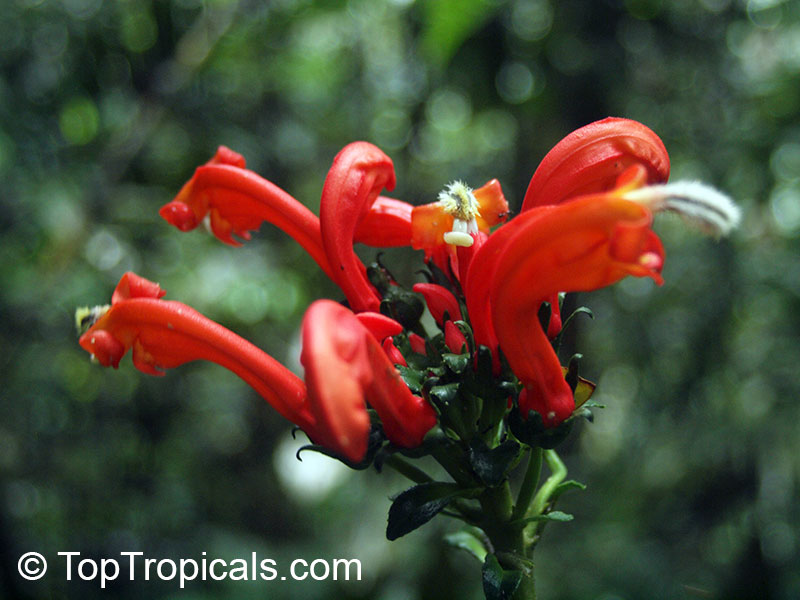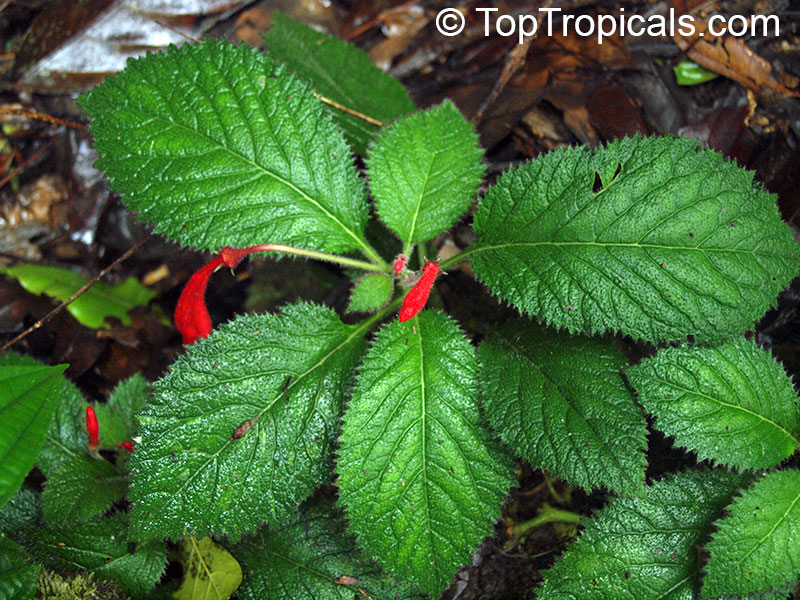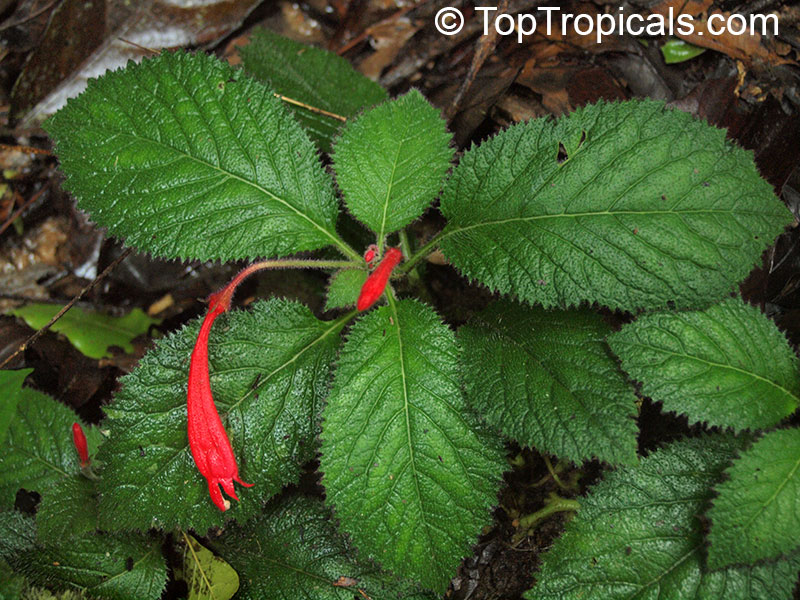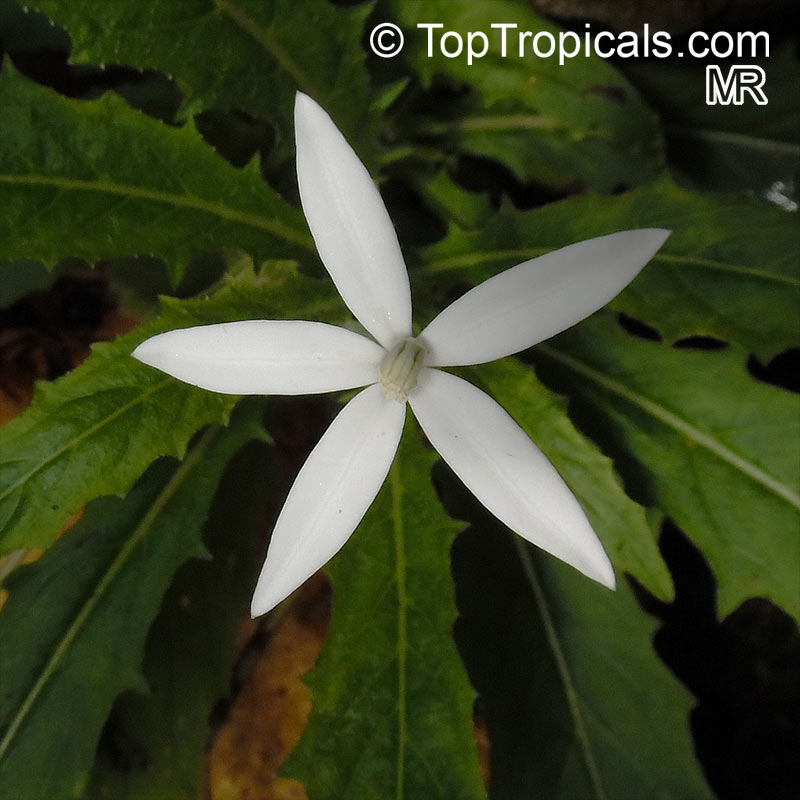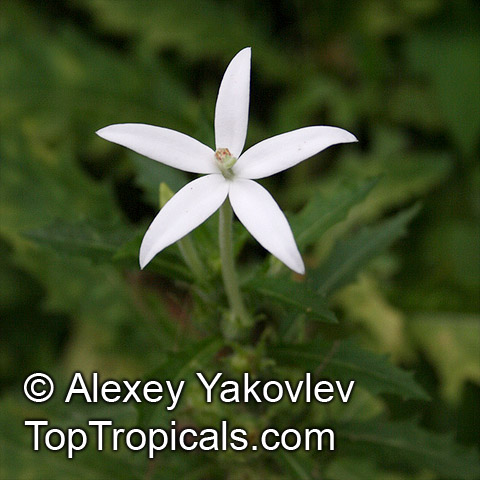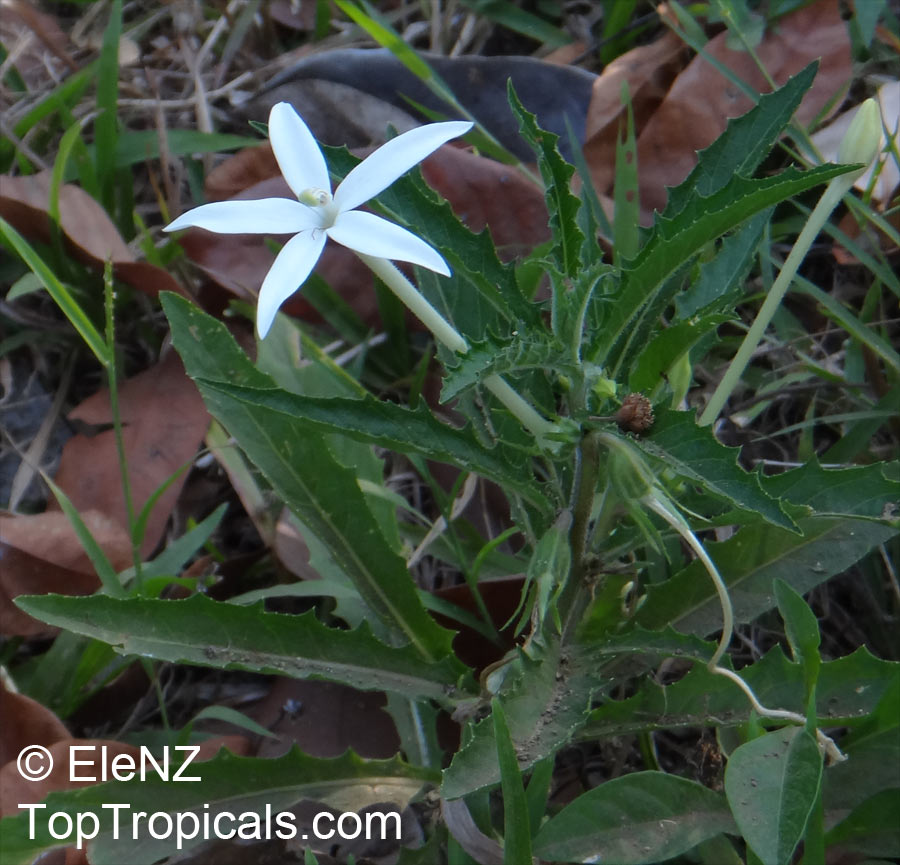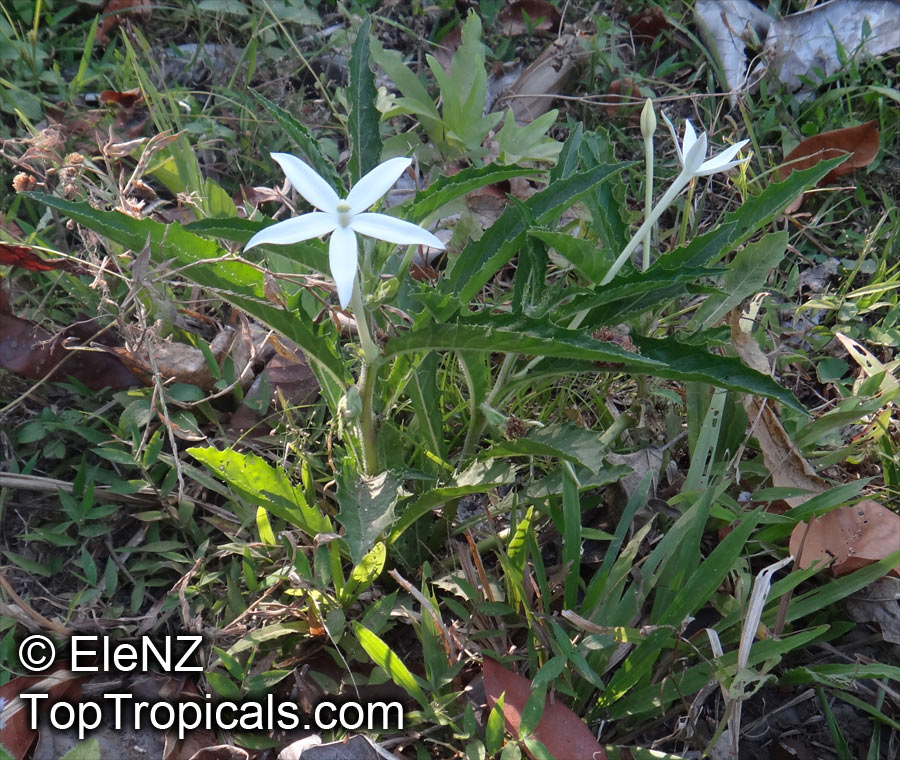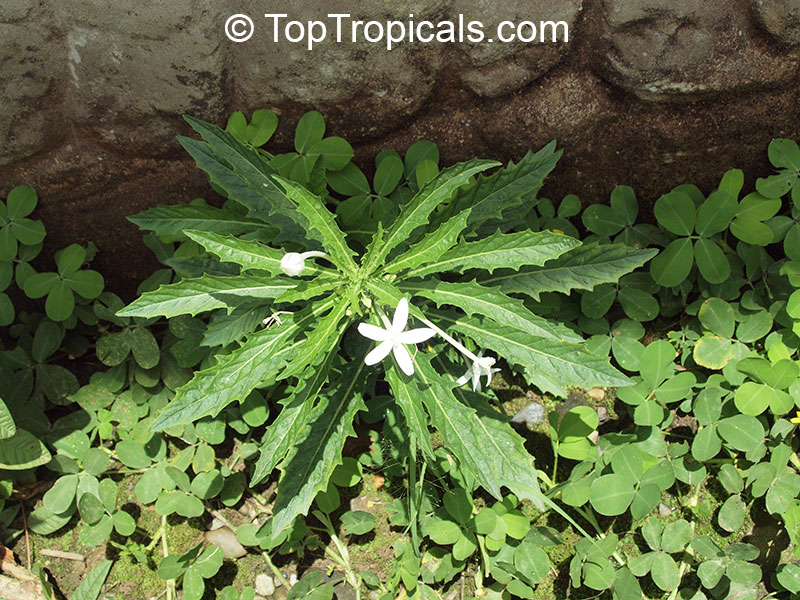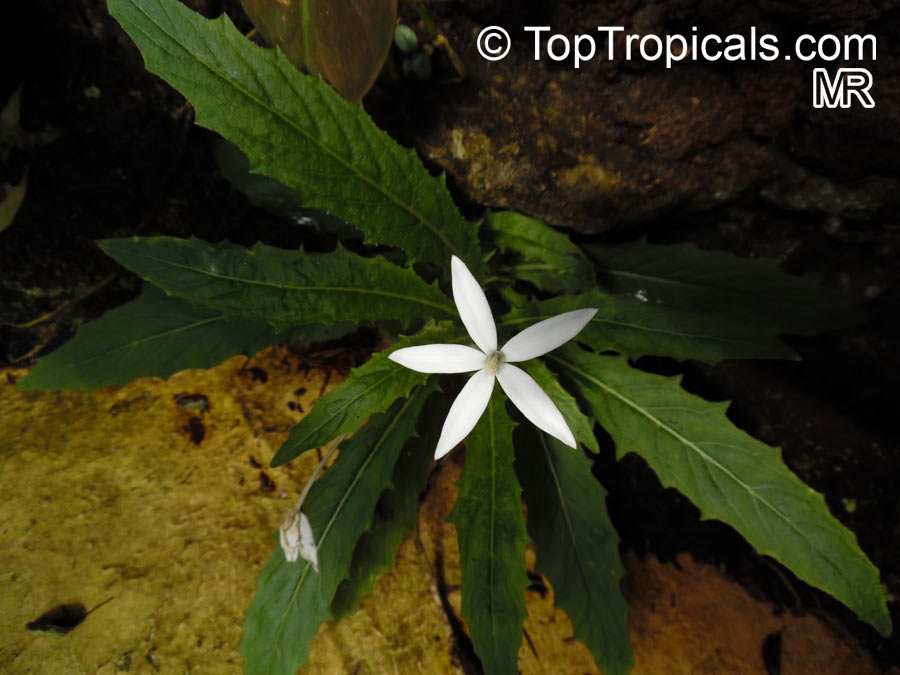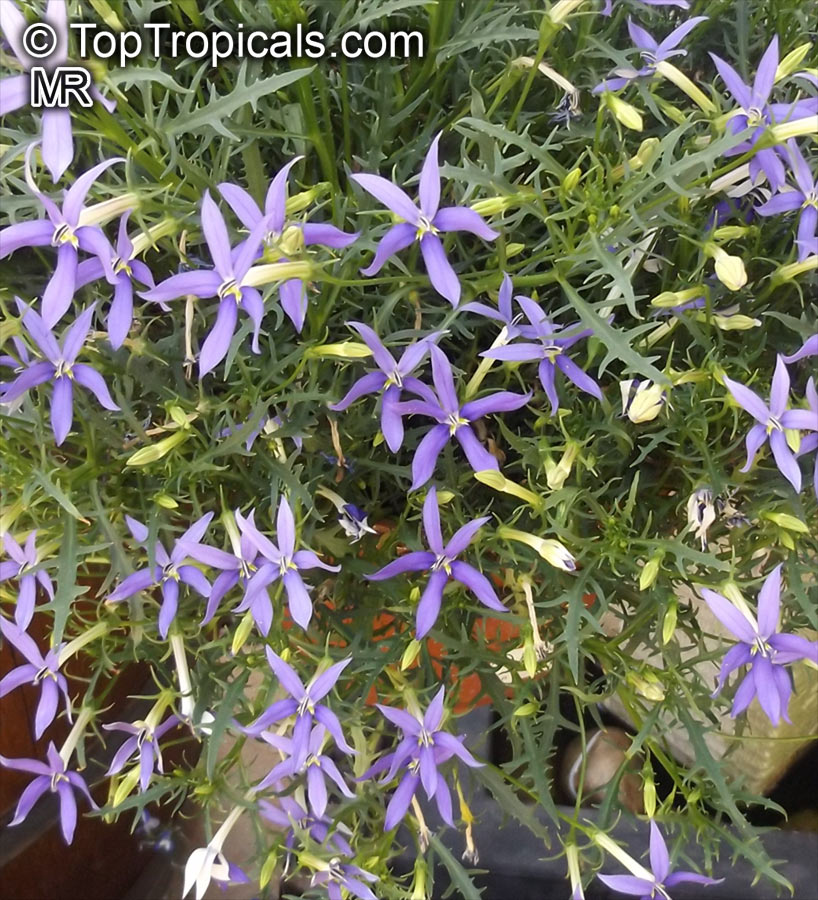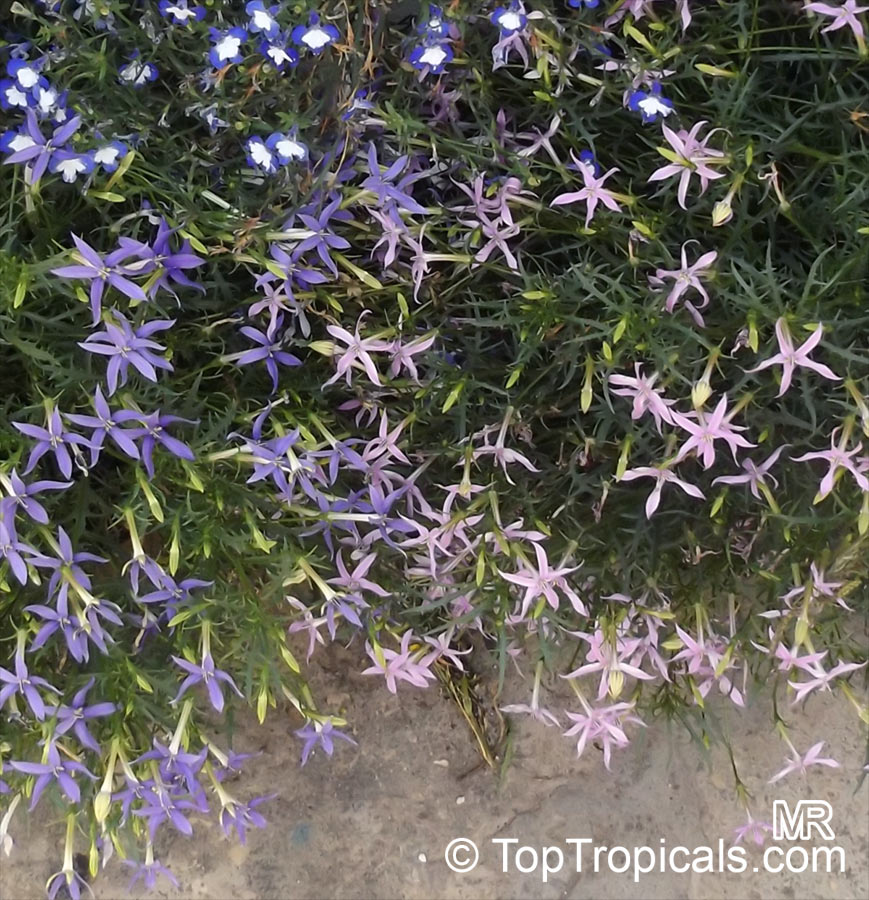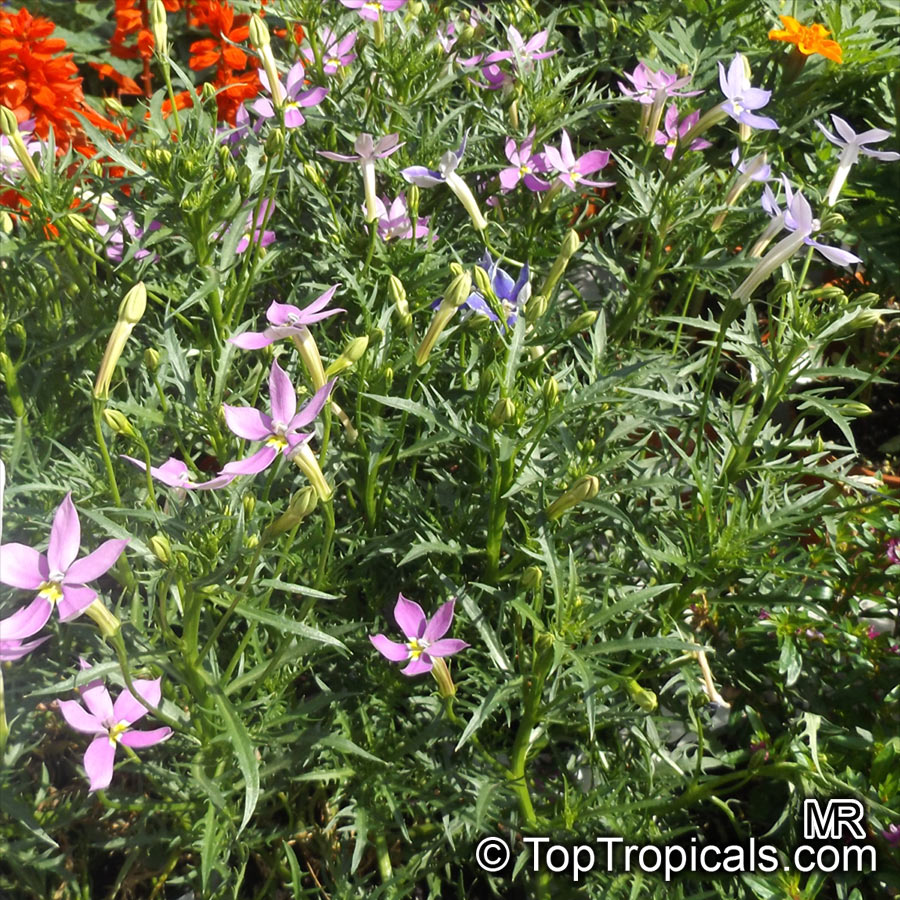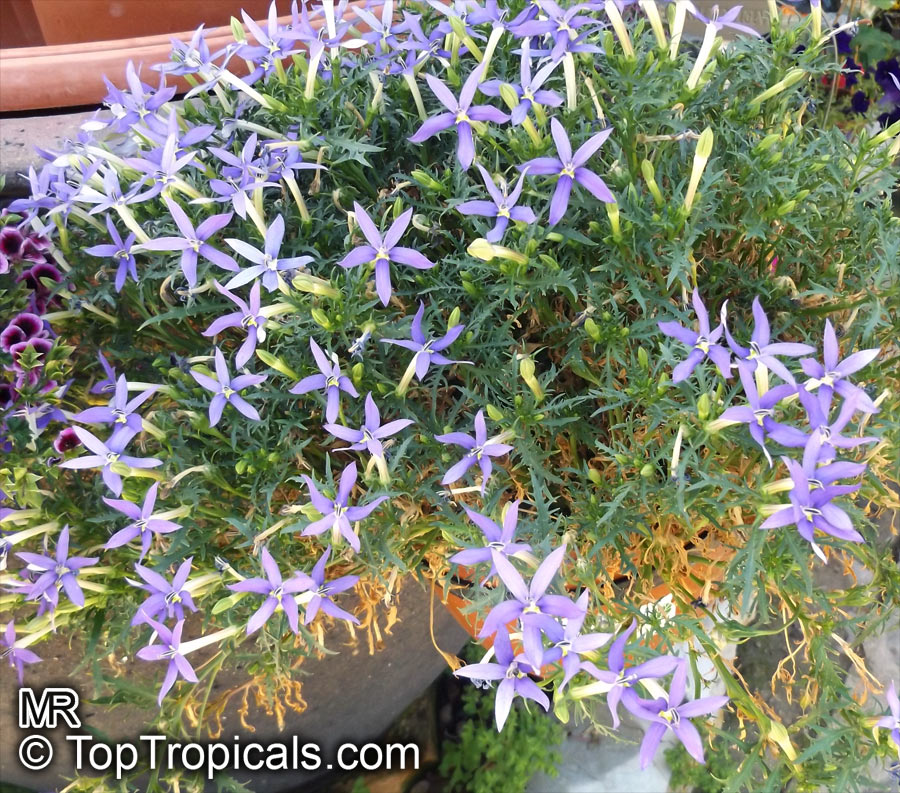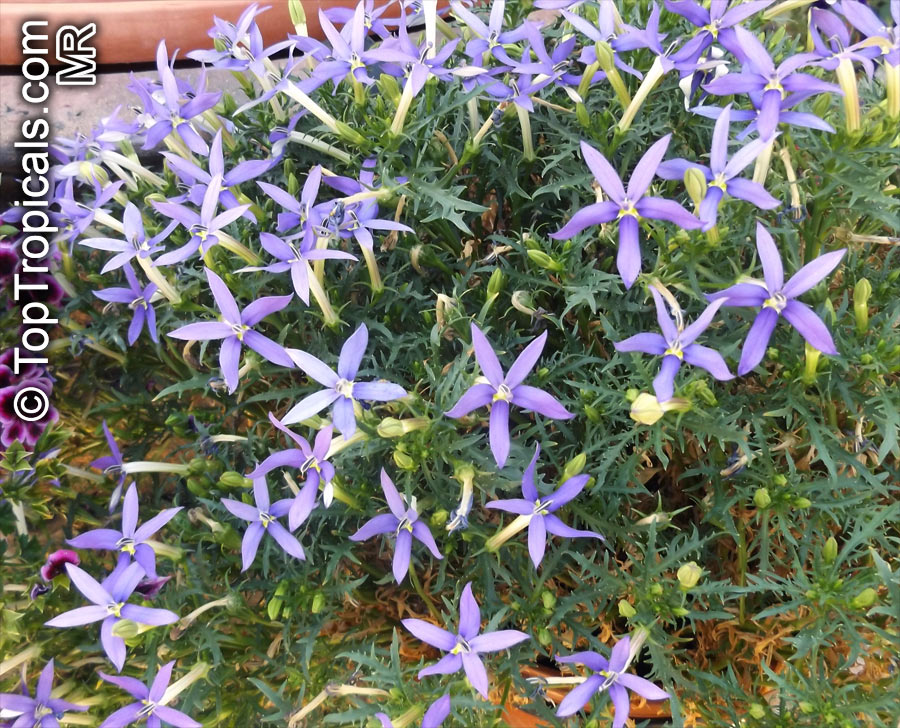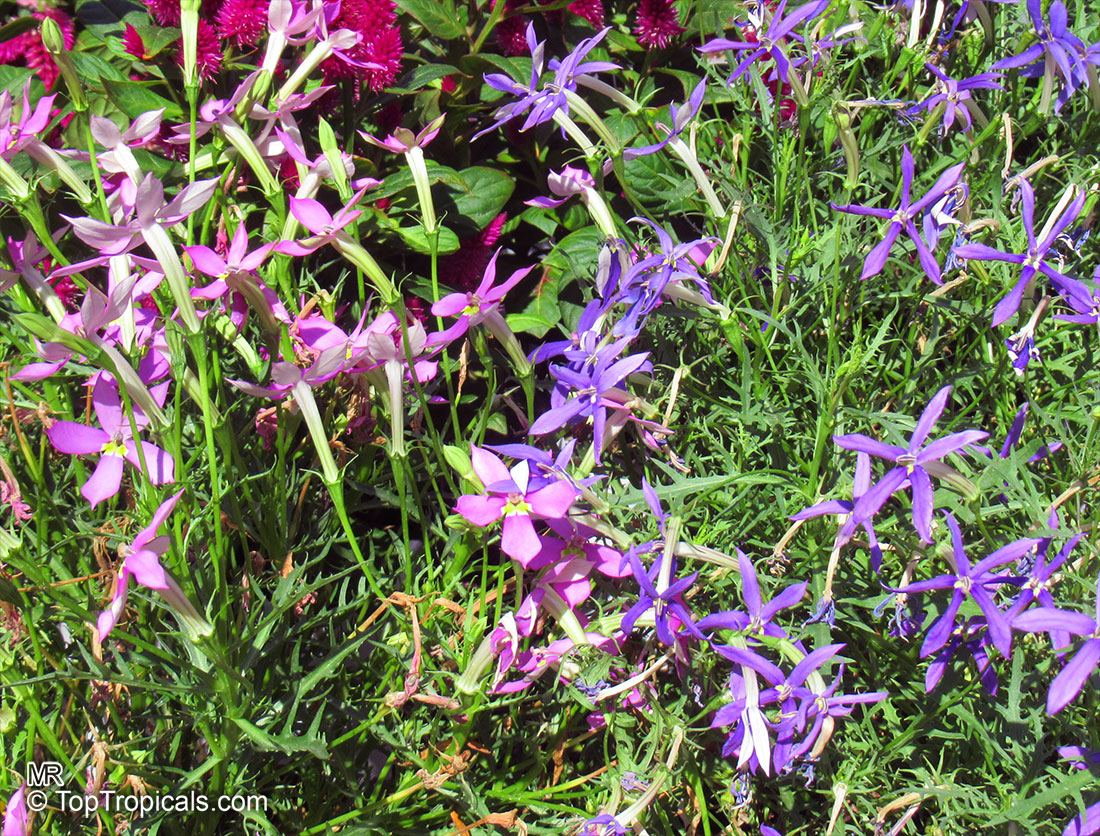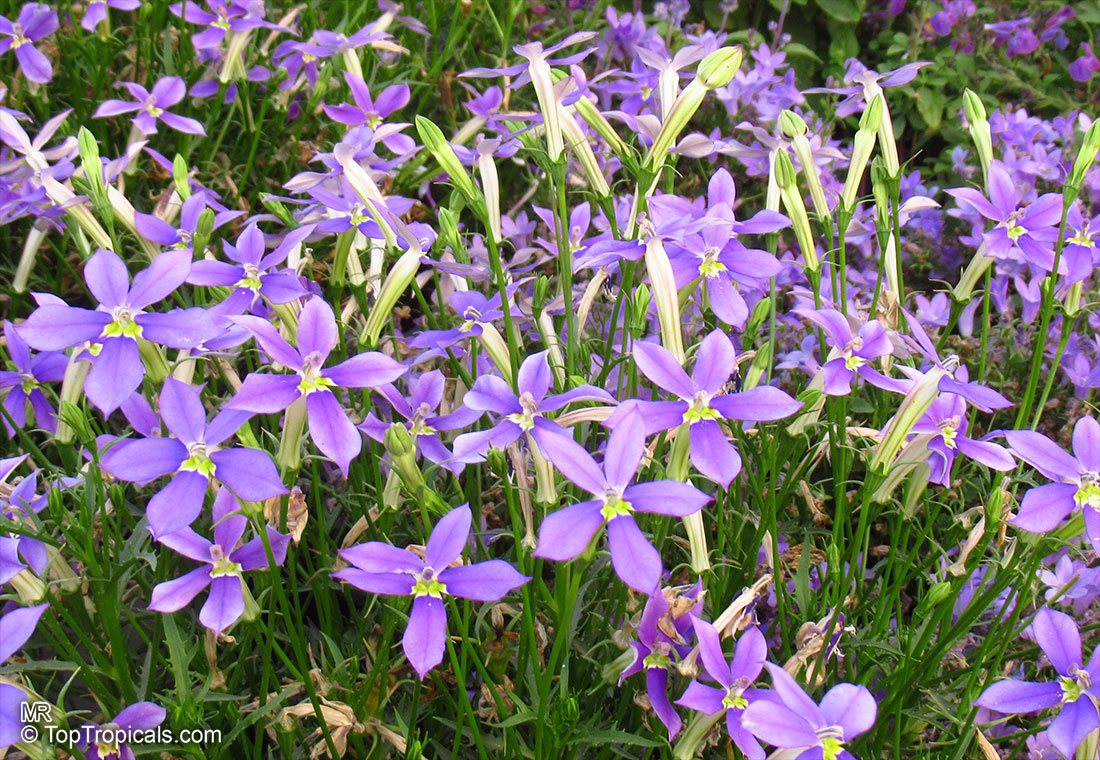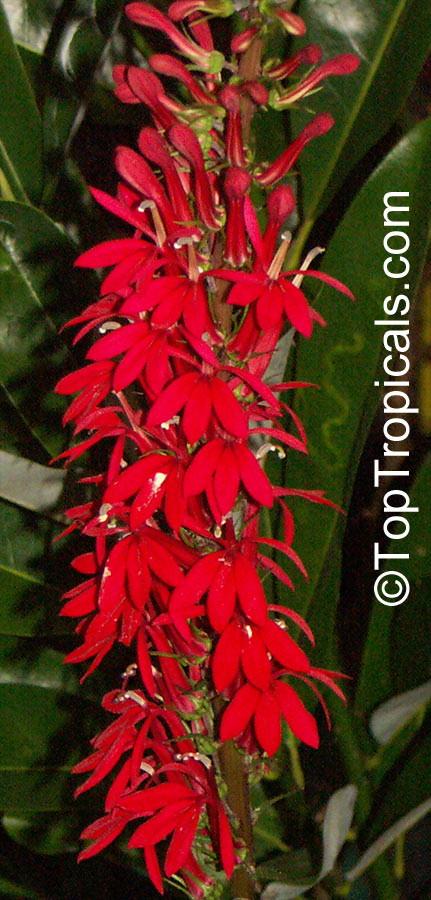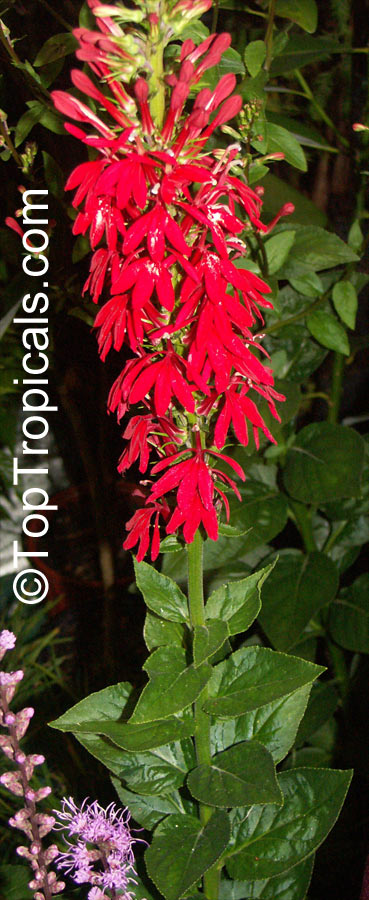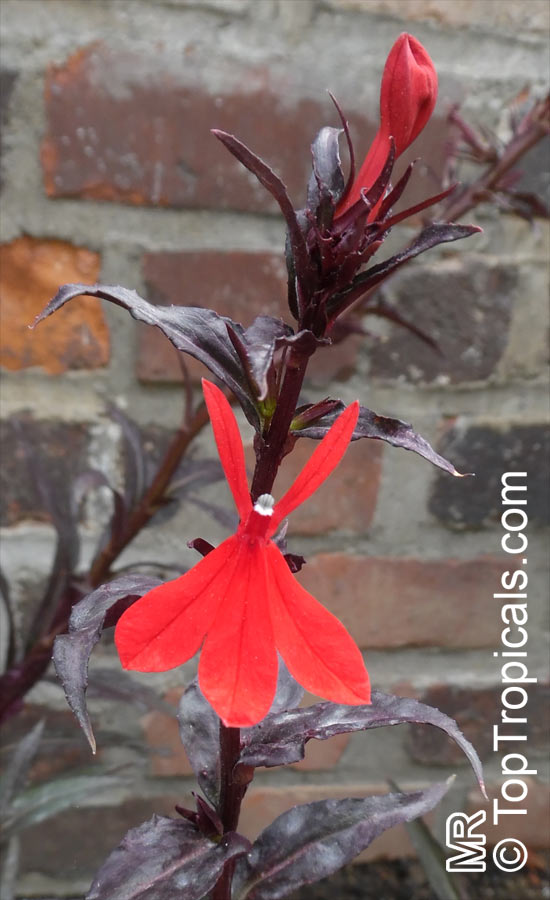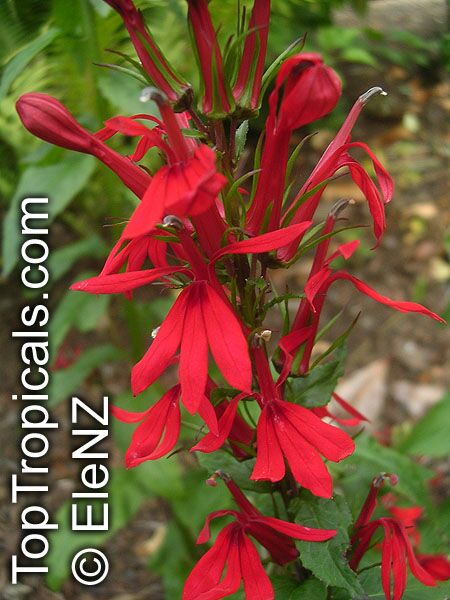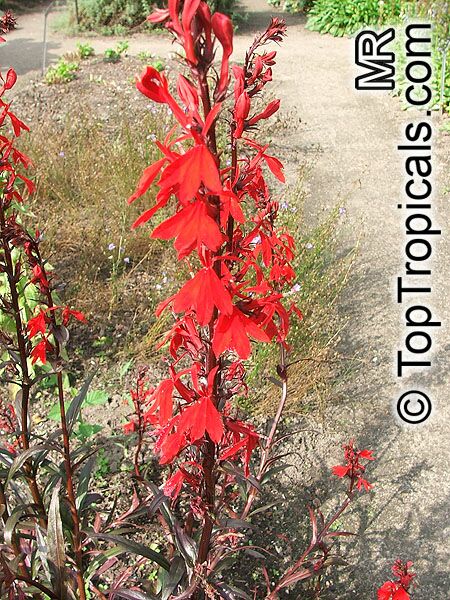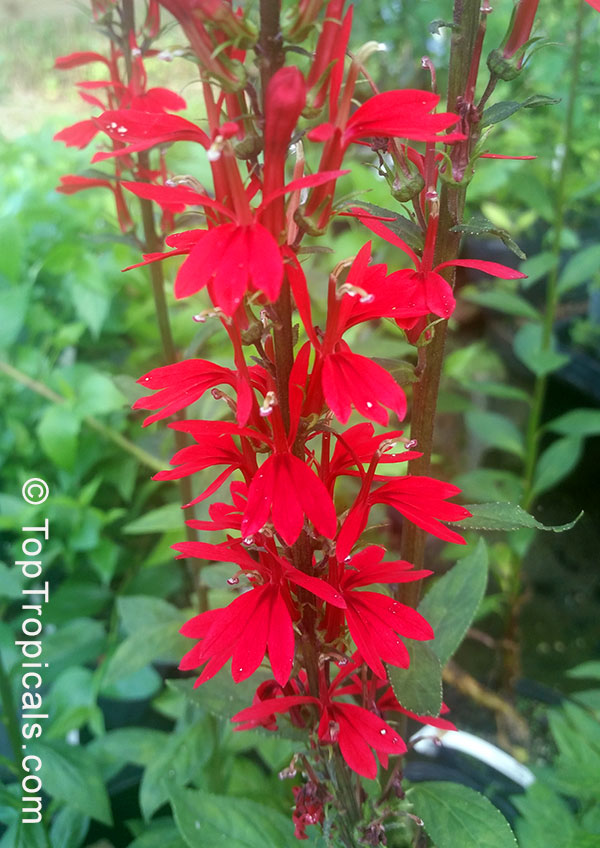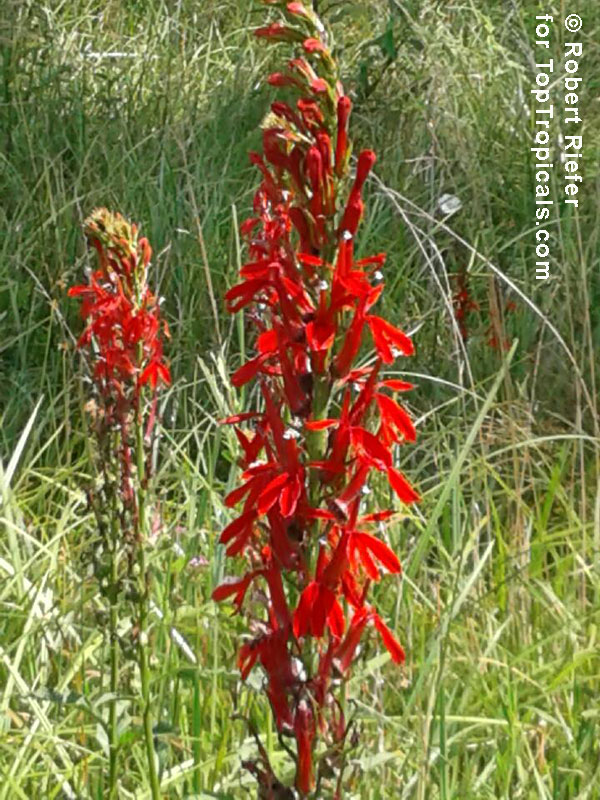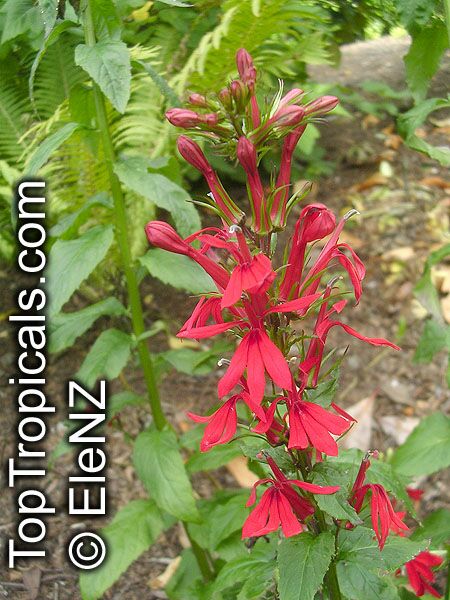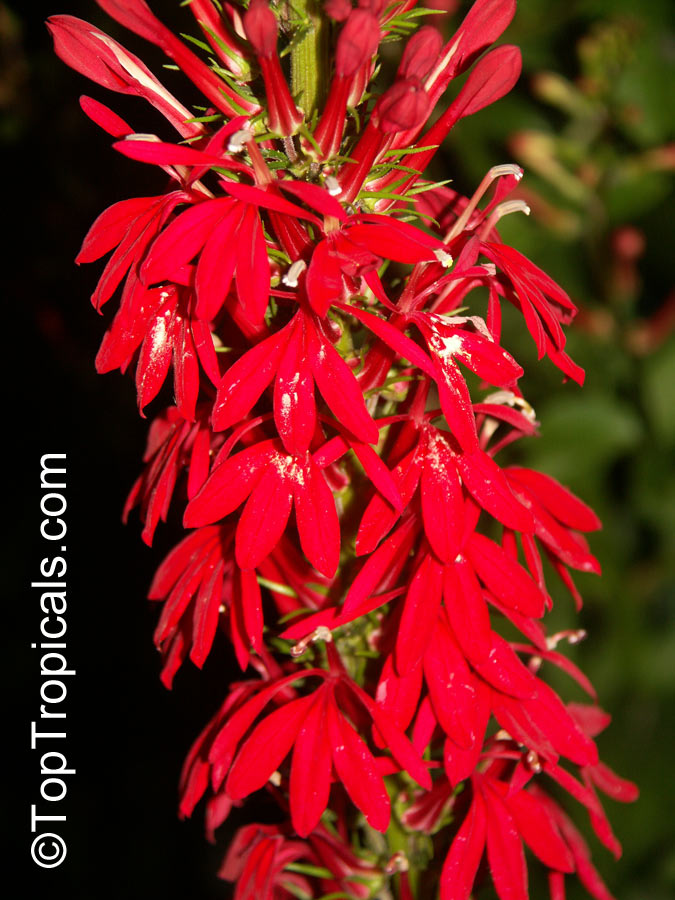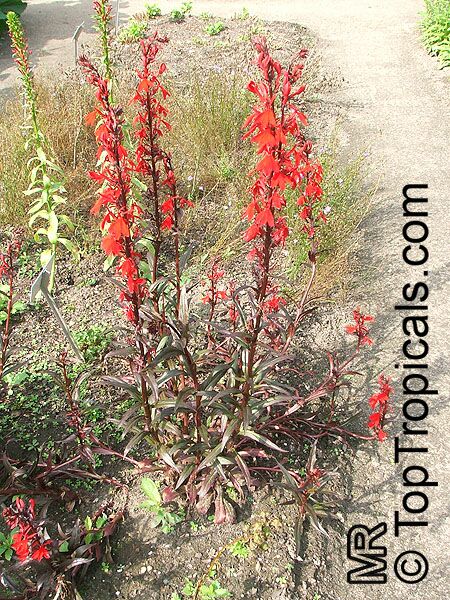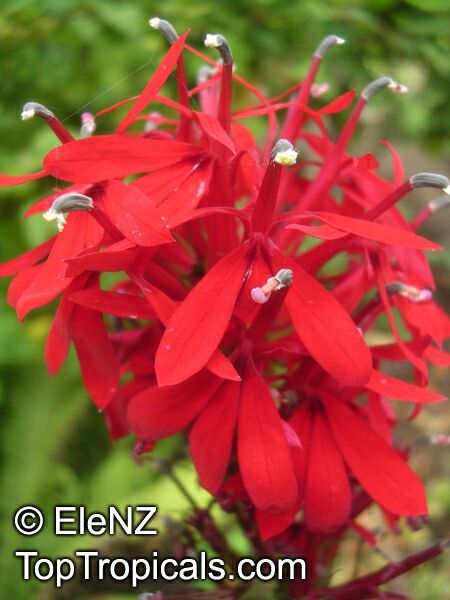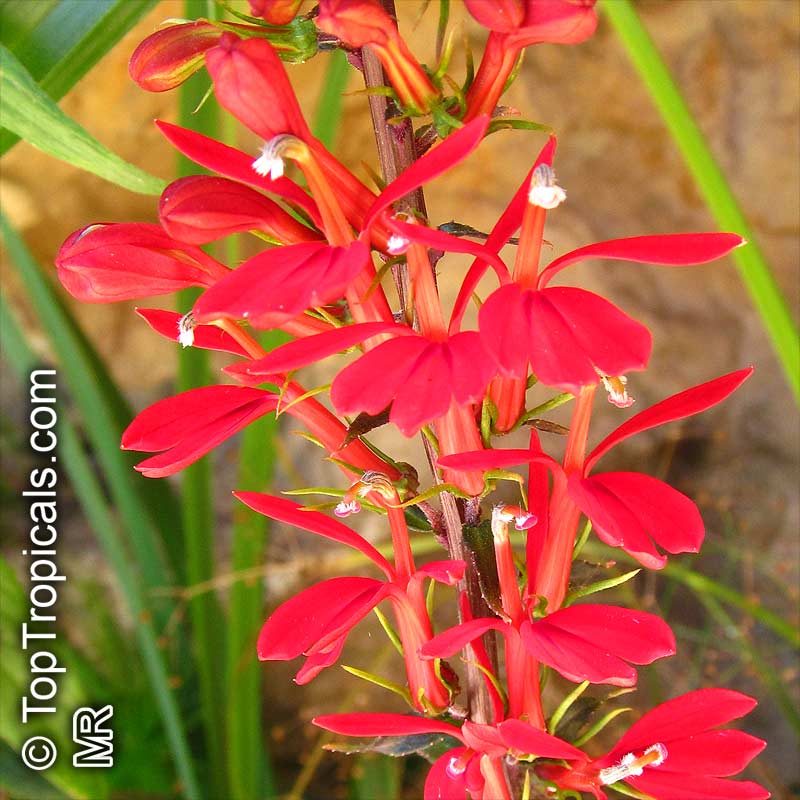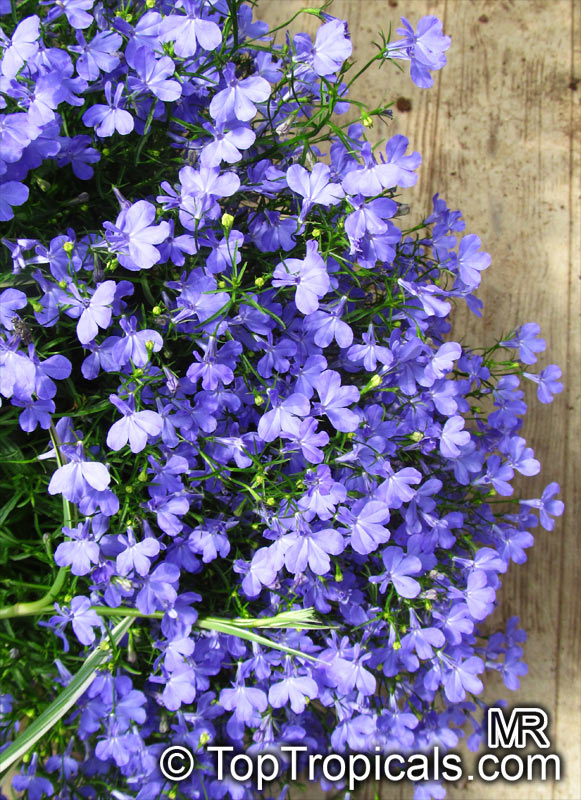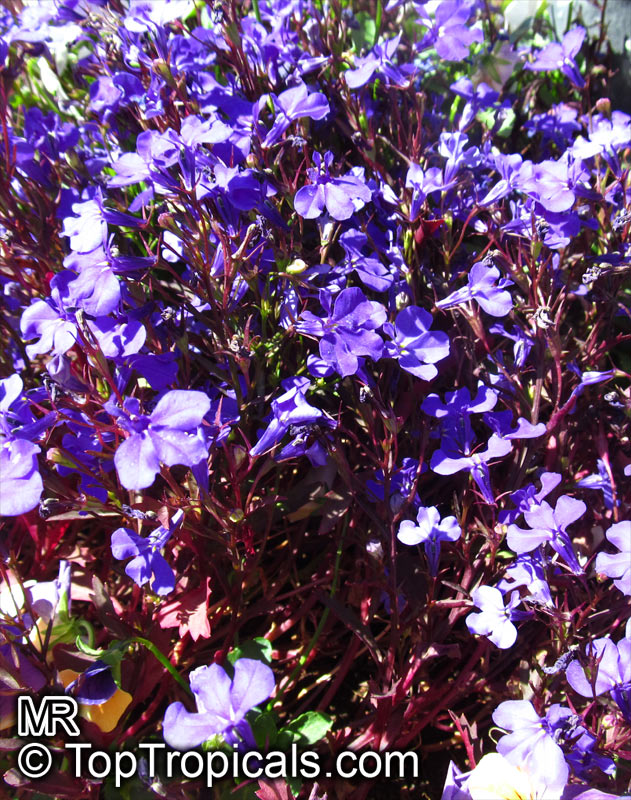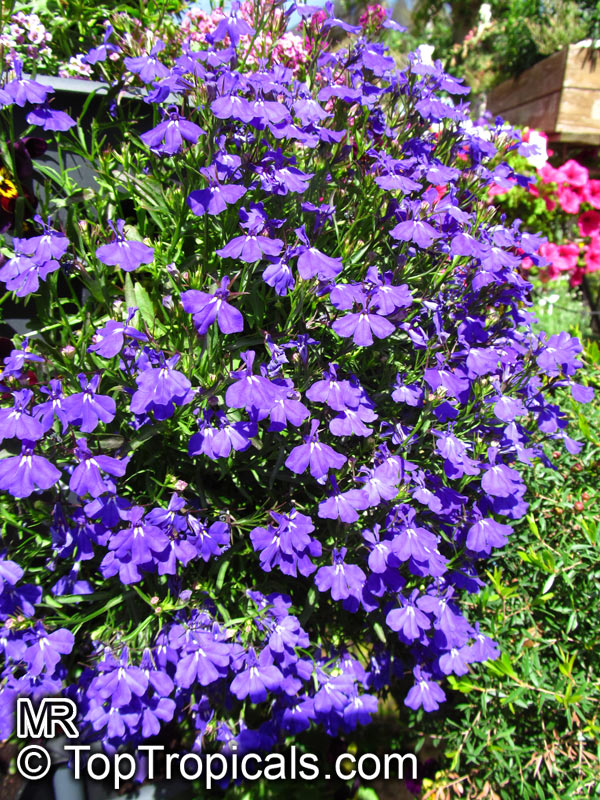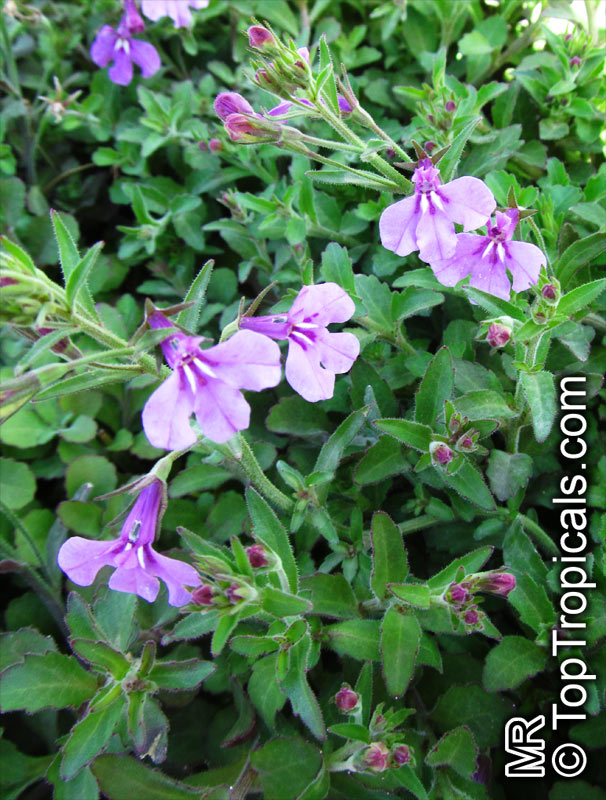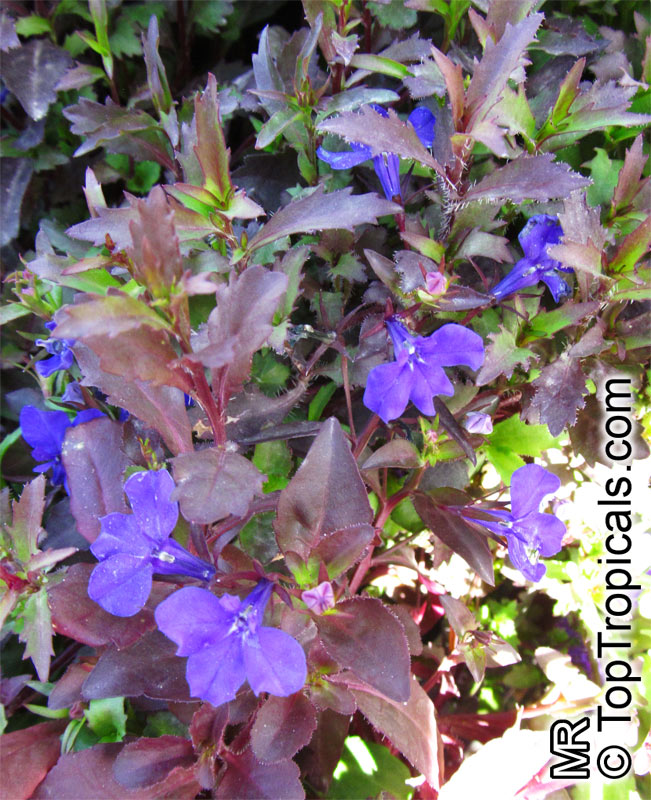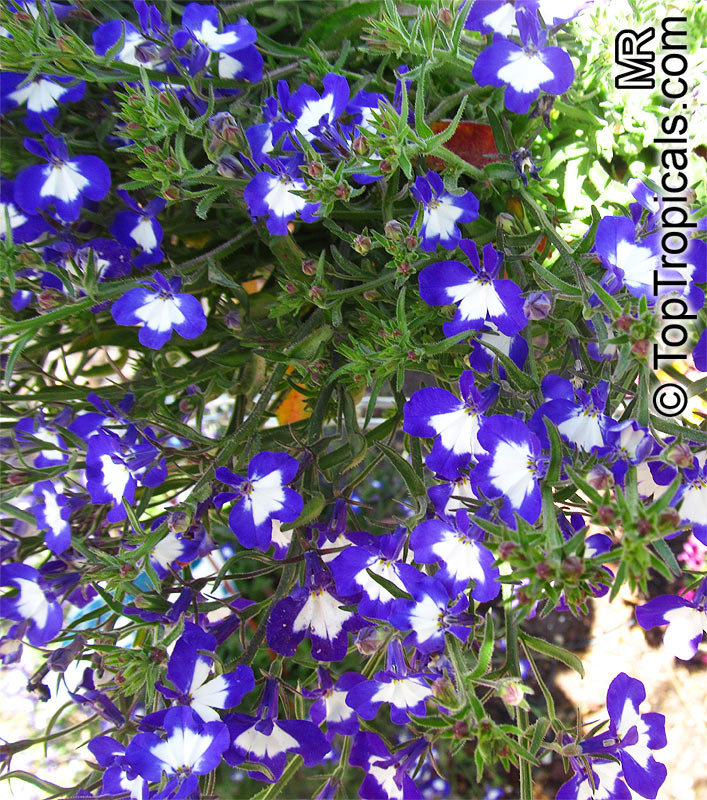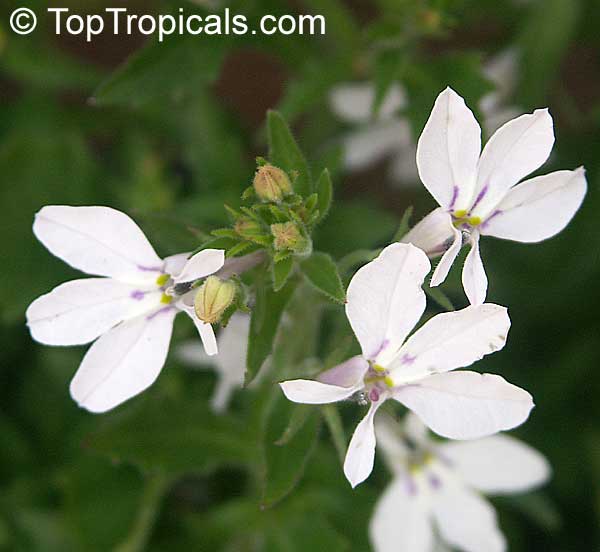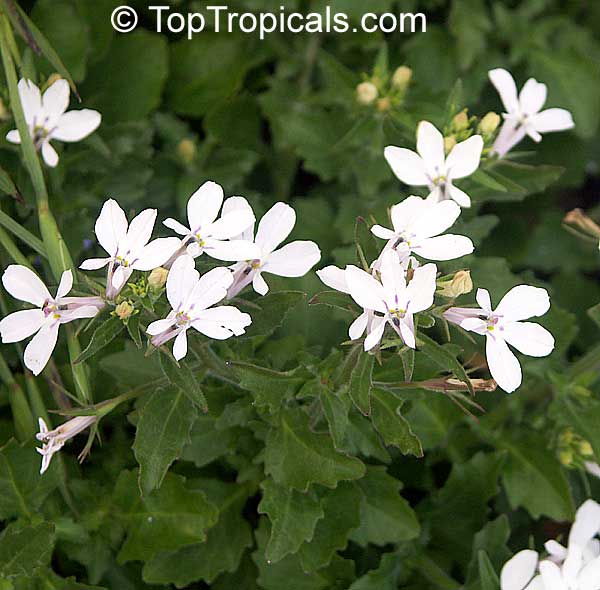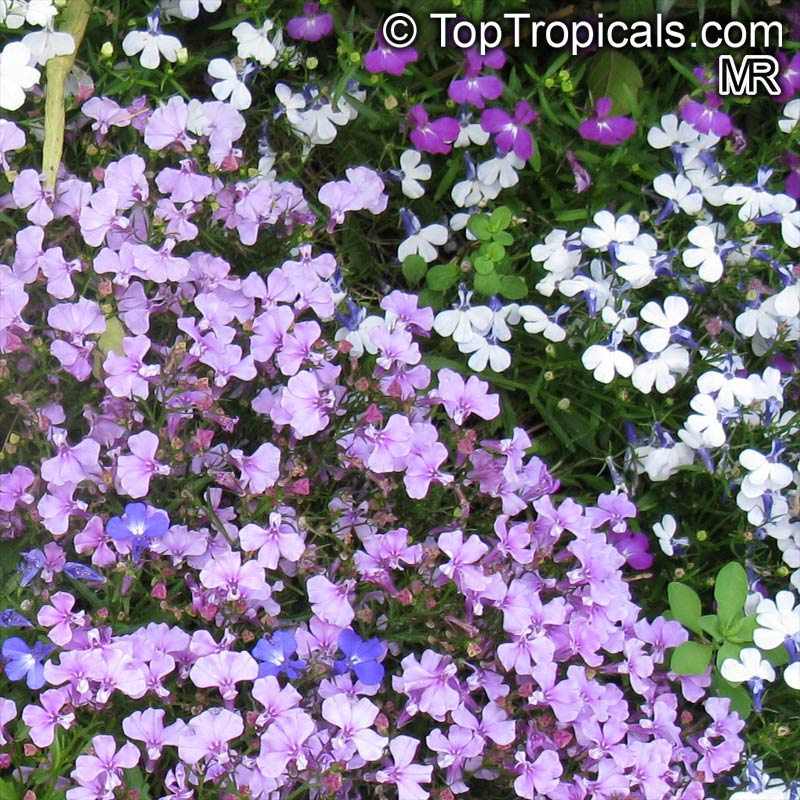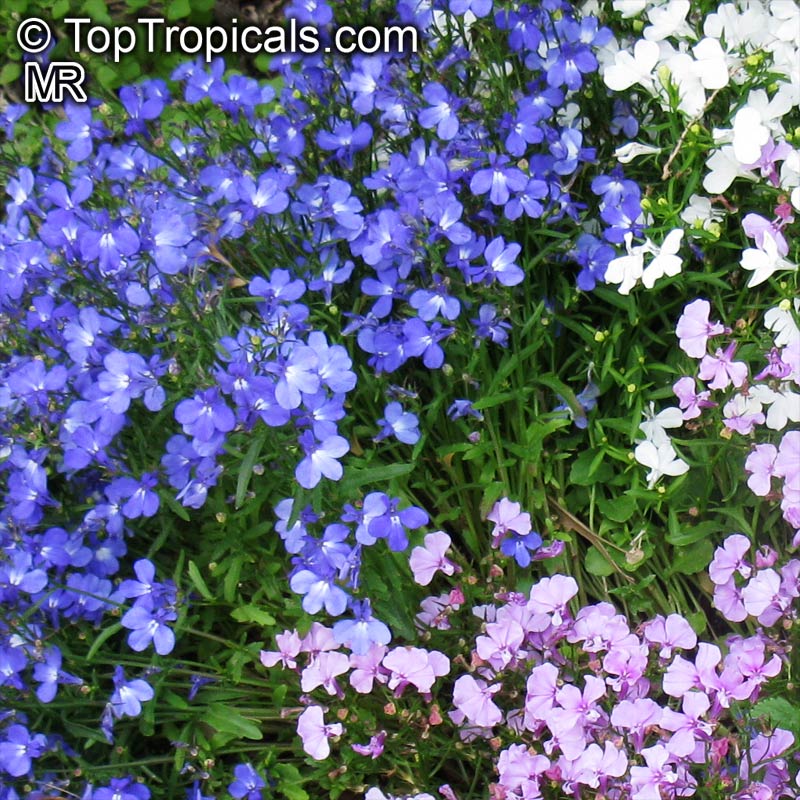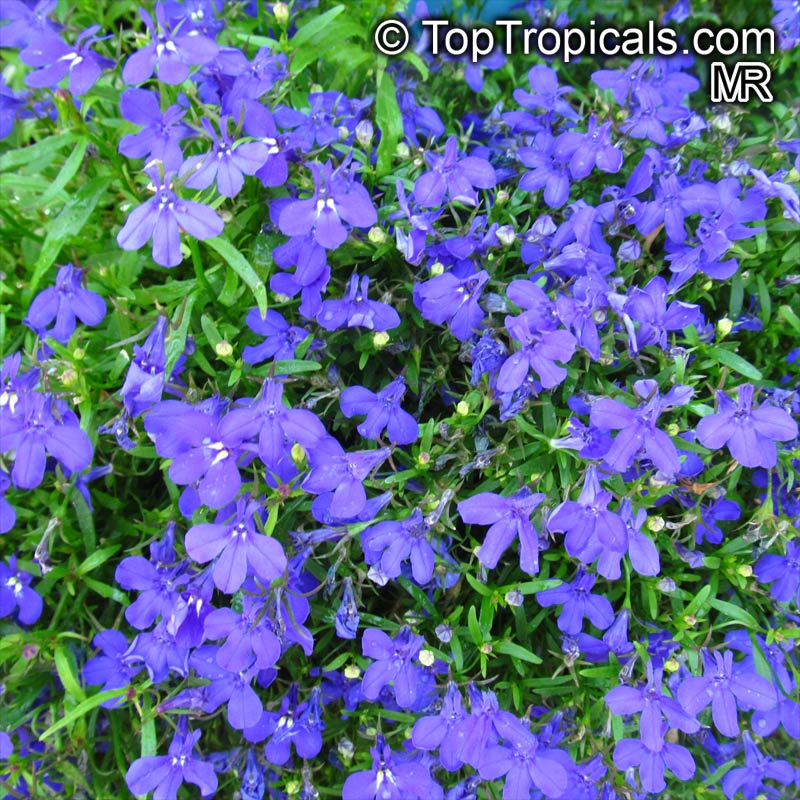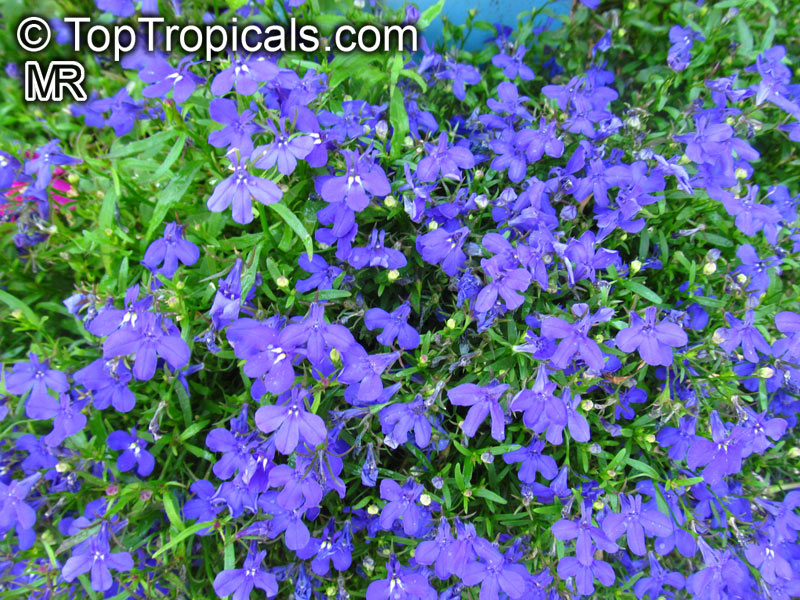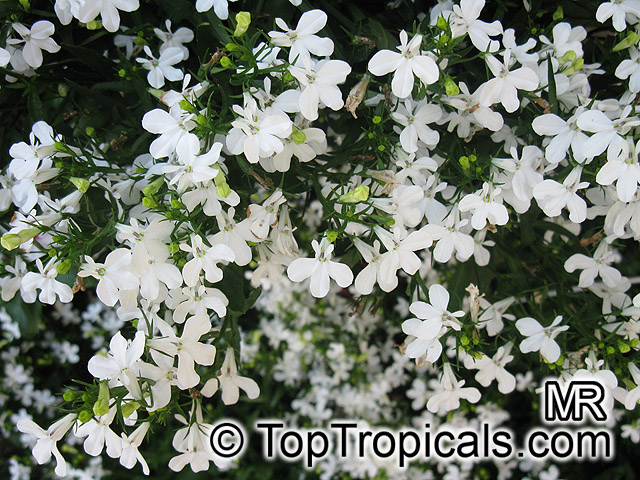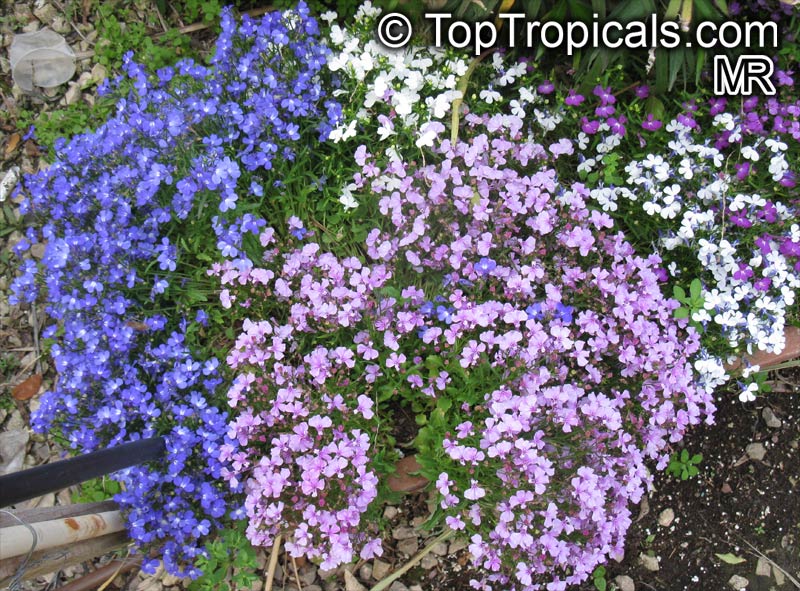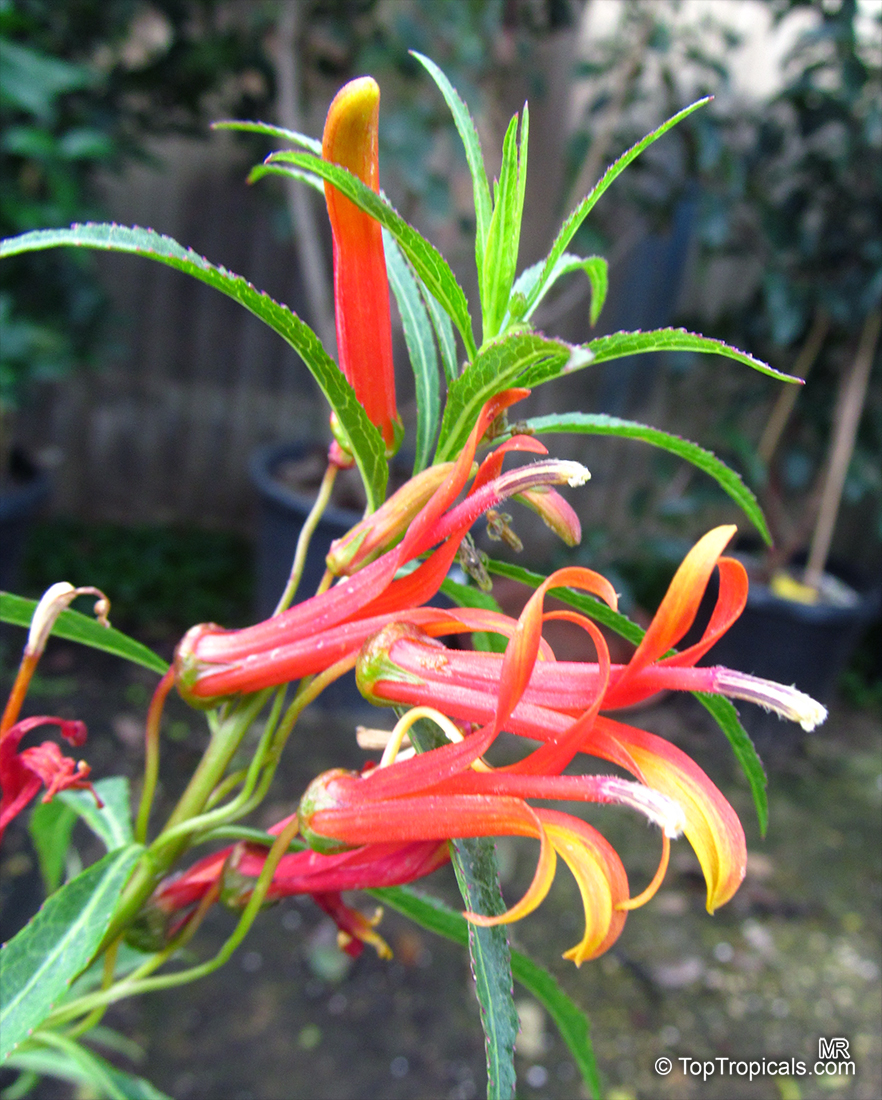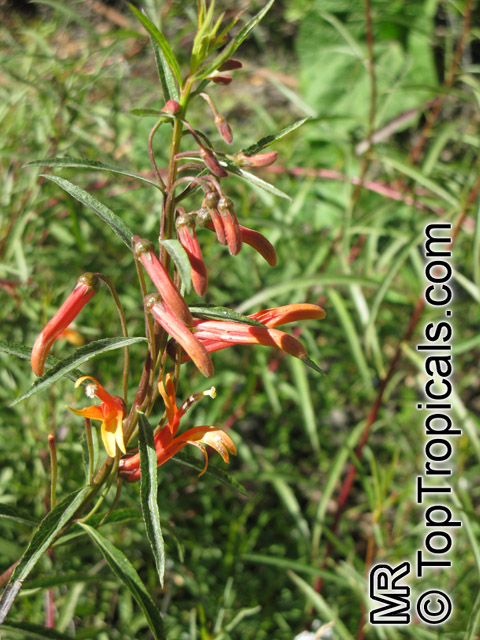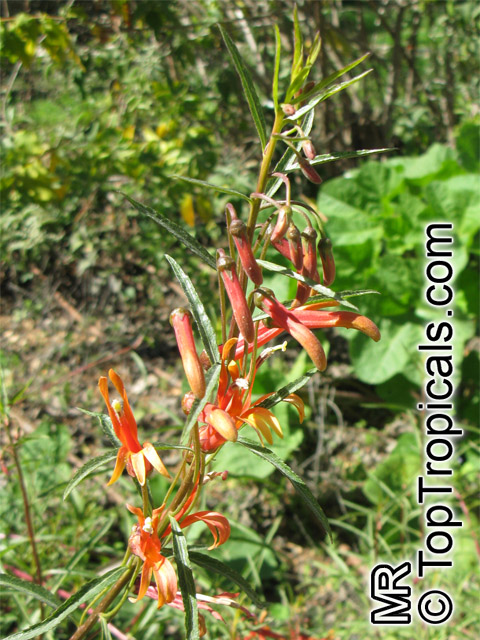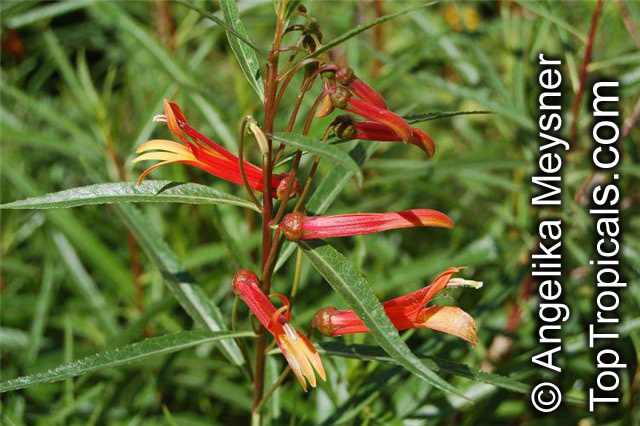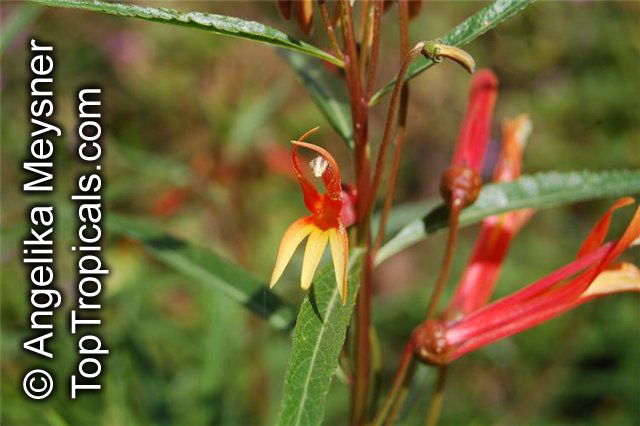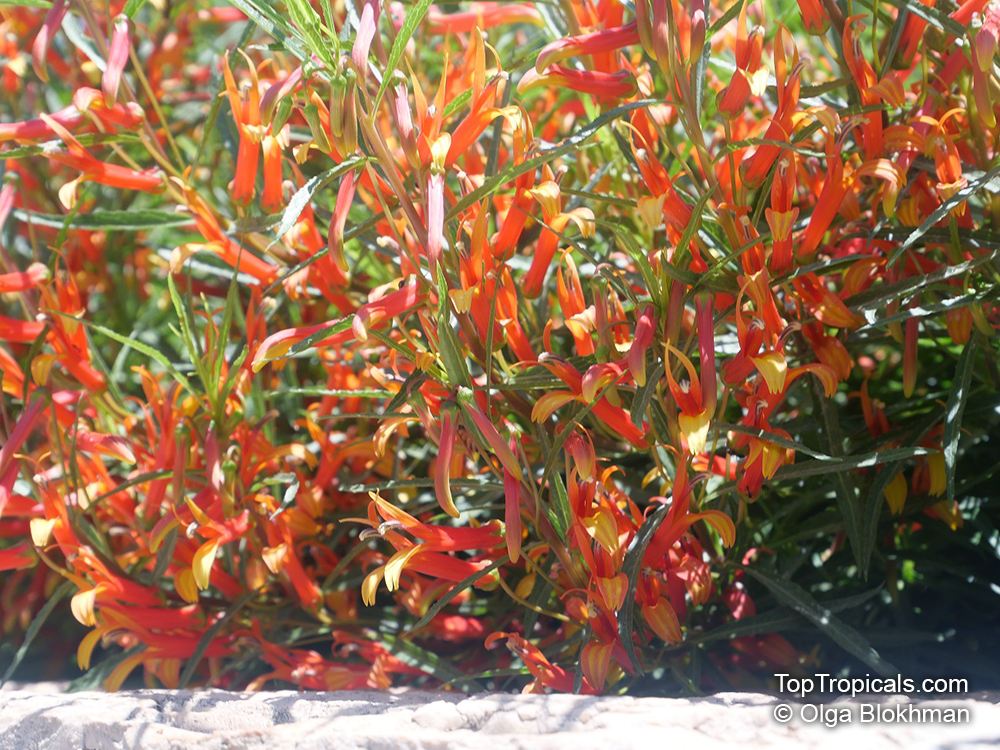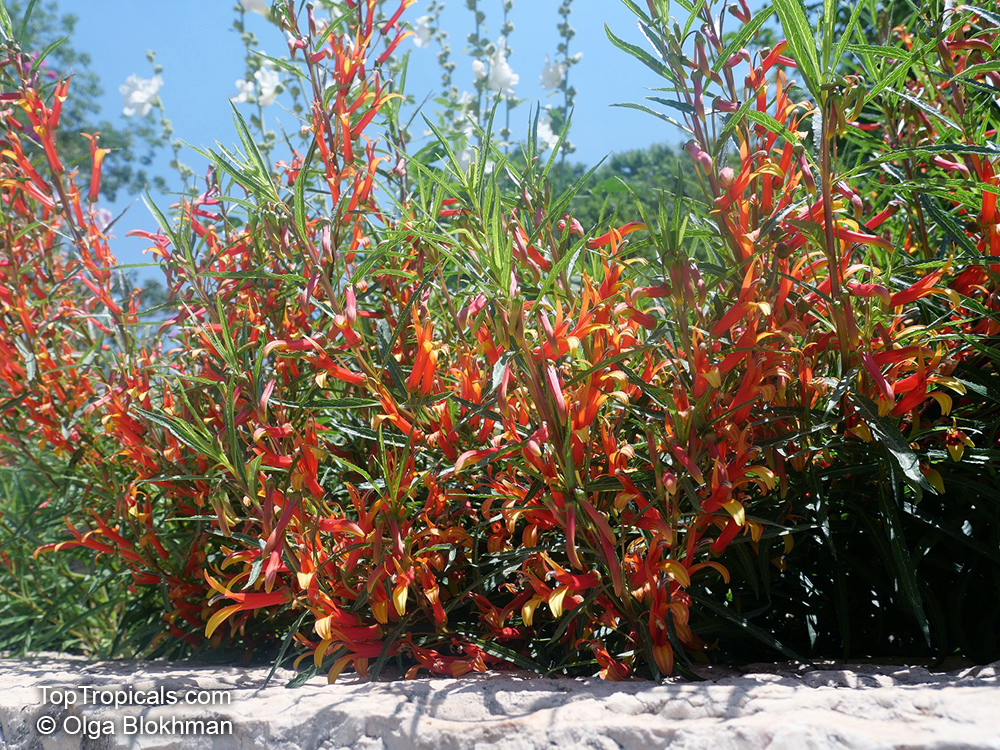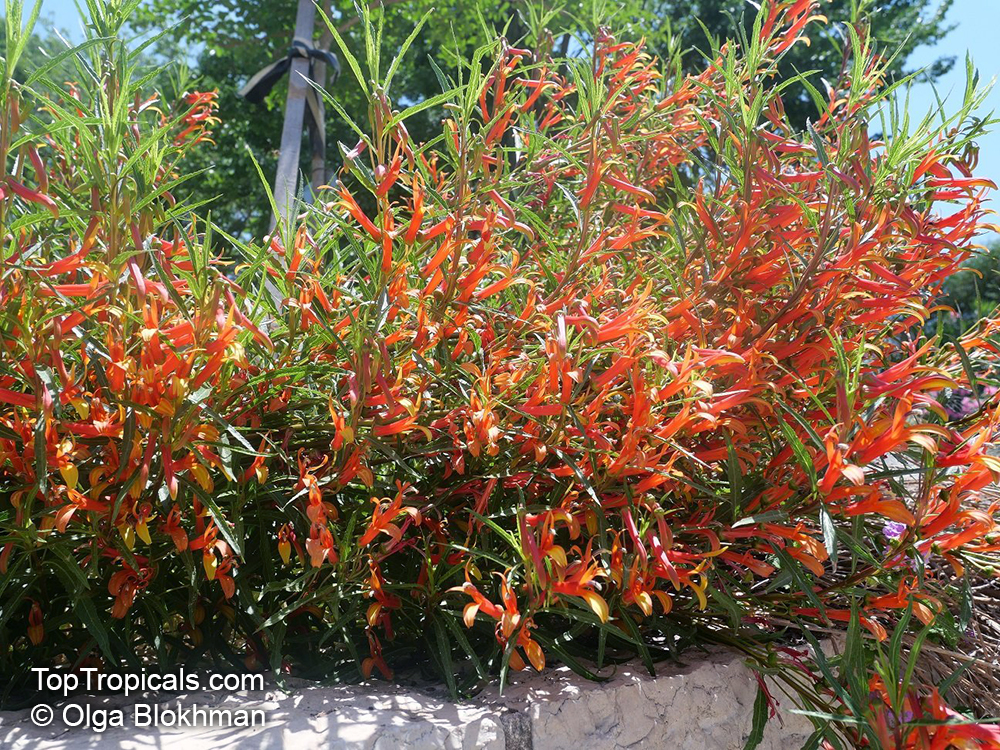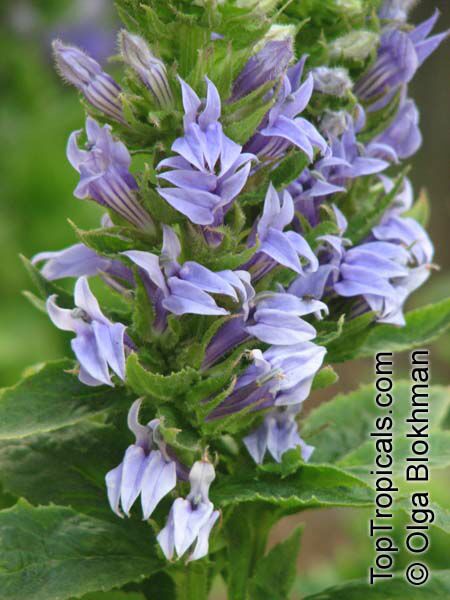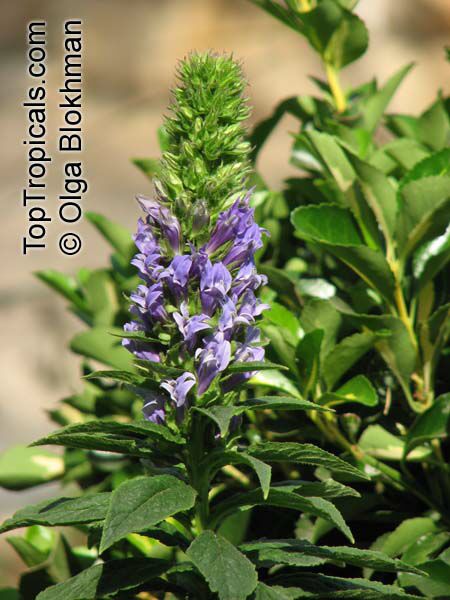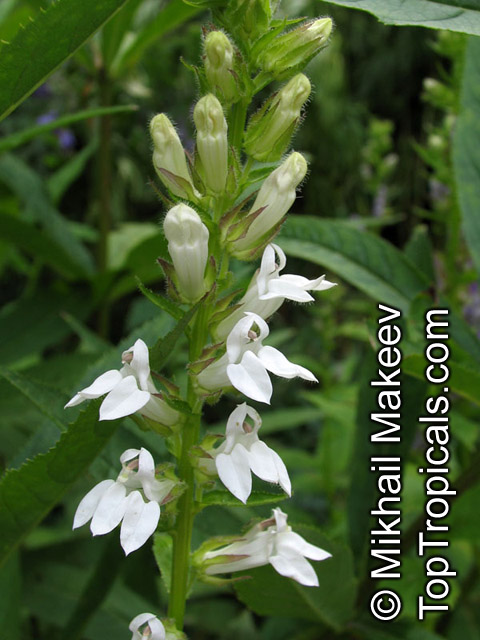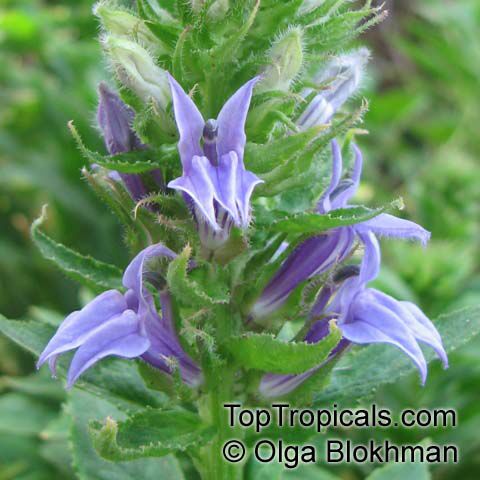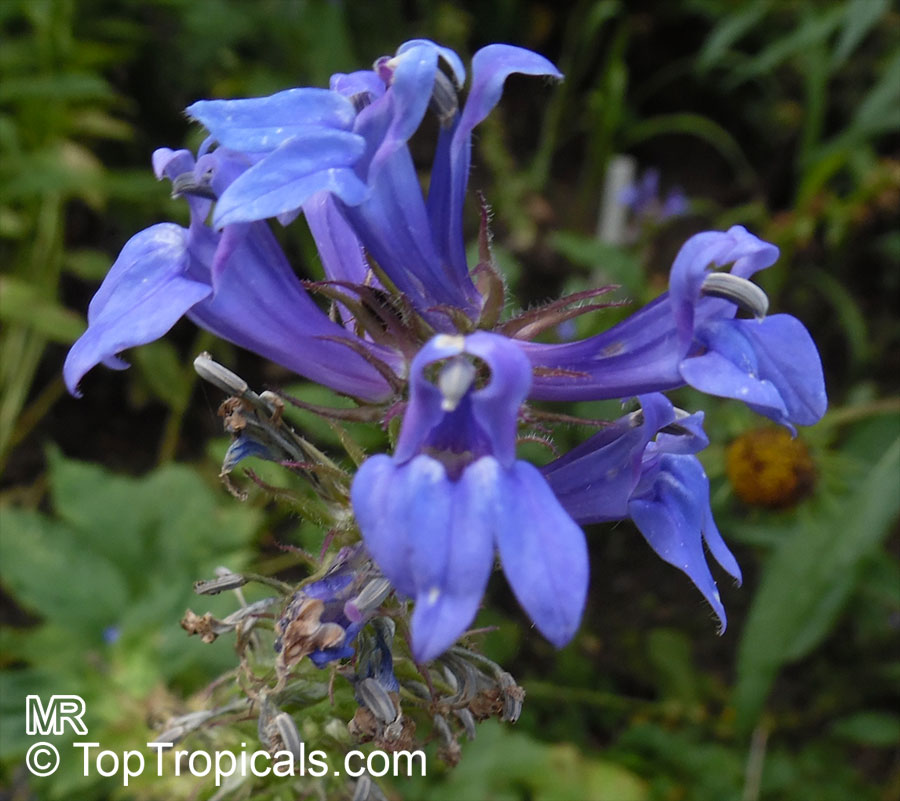Campanulaceae - Botanical Family
Top Tropicals Plant Encyclopedia
| Number of plants found: 15 | Next | 
|
Go to page: | 1 | 2 |
Botanical names: Brighamia insignis, Brighamia citrina
Common names: Olulu, Alula, Hawaiian Palm
Family: Campanulaceae
Origin: Hawaii








This short-lived perennial species is a member of a unique endemic Hawaiian genus. Both species have succulent stems, flower stalks that grow out from between the leaves. It has clusters of fragrant yellow flowers in groups of three to eight in the leaf axils.
Botanists and horticulturists have helped to save the species from extinction by pollinating plants and collecting seeds for propagation in collections.
Botanical name: Burmeistera cyclostigmata
Common name: Burmeistera
Family: Campanulaceae
Origin: Central America









Burmeistera cyclostigmata is an interesting and unusual small to medium-sized perennial creeper or vine native to Central America. It grows up to 2-5 ft and can be found creatively clinging to rocks, trees, and structures; although, it can also grow as an upright shrub. Its glossy, dark green foliage adds a lush, leafy accent to its overall appearance, while its early summer flowers, in shades of pink to red, crimson, and vinous, turn the plant into a show stopping garden spectacle. It's no wonder that this hardy plant attracts both hummingbirds and butterflies alike.
When it comes to plant care, Burmeistera is rather easy to maintain in USDA Zones 9-11 with regular water and semi-shade. If you're in a colder region, Burmeistera can be grown in pots and protected during the winter months. In the spring, when the threat of frost has passed, the pot can be placed out in the garden. During the summer months, be sure to keep the soil evenly moist and give it plenty of fertilizer. If you want to keep your potted plant for more than one season, it is important that you repot it into a larger pot every few years so that it can continue to thrive.
Overall, not only is Burmeistera cyclostigmata a beautiful and easy-to-care-for plant, it is also an attractive addition to any garden with its unusual color and attractive blooms. If you're looking for an interesting and eye-catching way to add a pop of color to your outdoor space, this Central American native is a wonderful choice.
Botanical name: Campanula sp.
Common name: Bellflower
Family: Campanulaceae
Origin: Europe









Campanula is one of two genera of bell-flowers in the family Campanulaceae, the other being Campanulastrum. It takes its name from their bell-shaped flowers, and campanula is Latin for 'little bell'. There are about 45 different species and several subspecies, including the northern European Campanula rotundifolia, commonly known as harebell in England and bluebell in Scotland where it grows in the wild, and the southern European Campanula medium, commonly known as Canterbury Bells which is a cultivated garden plant in the United Kingdom. As well as several species occurring naturally in the wild in northern Europe, there are many cultivated garden species. The species Campanula rapunculoides or Campanula rapunculus, commonly known as Rampion, Rampion bellflower, or Rover bellflower is an annual vegetable and a popular garden plant, though sometimes considered too invasive. There are blue, purple and white varieties.
Botanical name: Centropogon sp.
Common name: Centropogon
Family: Campanulaceae
Origin: Central America, Southern America







Botanical name: Hippobroma longiflora
Common name: Star of Bethlehem
Family: Campanulaceae
Origin: West Indies






Botanical name: Isotoma axillaris
Common names: Rock Isotome, Showy Isotome, Blue Stars, Star Flowers
Family: Campanulaceae
Origin: Australia






Isotoma axillaris is a small shrub that typically grows to a spreading clump 2-5 ft tall and 3-6 ft wide. It prefers a sunny location and moderate to regular watering. It can be grown in USDA zones 10-11.
The slender stems are lined with dark green, narrow, pinnatisect leaves. The foliage provides an interesting backdrop for the open star-shaped flowers, which come in shades of pink, blue, lavender, purple, white and off-white. The flowers attract pollinators such as bees and butterflies.
If you are growing Isotoma axillaris in a pot, they should be planted in a well-drained potting mix and kept in a sunny location. They will need regular watering and fertilizing. In areas with cold winters, bring the pot indoors before the temperature drops below 40 F (4 C). You can then move it back outside in spring after the frost danger has passed.
Isotoma axillaris is a great choice for adding texture and color to a garden border or rock wall. Best of all, it is easy to care for and will keep blooming from summer to fall.
Botanical name: Lobelia cardinalis
Common name: Cardinal Flower
Family: Campanulaceae
Origin: Southeast USA











Lobelia cardinalis, commonly called Cardinal Flower, is a small shrub native to Southeast USA. It grows between 2 and 5 feet high with brilliant red, crimson and vinous flowers. It is easy to take care of and requires full sun to semi-shade position. It also needs to keep its soil moist and benefit from regular waterings. Cardinal flower is a spectacular show along the edge of a pond or water garden.
Cardinal flower requires moist soil. It can even tolerate flooding but not drought. This plant has used for ethnomedical purposes and attracts butterflies and hummingbirds. Hence, making it a great landscape feature. Great for mass plantings.
It is essential to keep in mind that is native plant to the Southeast USA is poisonous or toxic. Therefore, Cardinal Flower has to be handled with care, especially for those who have kids or animals in the house. Furthermore, a mature plant is cold hardy at least to 30s F for a short time.
Cardinal Flower can be grown in pots in cold regions. For pot growing, its moist but well-drained soil and regular watering are a must. And, it will thrive if planted in the right environment under the full sun. Keep the plant well-trimmed to encourage new growth.
Cardinal Flower is not just a beautiful garden plant, it also has some medicinal uses and a good butterfly-attracting feature. Despite its toxicity, it is worth growing for such exceptional qualities.
Botanical name: Lobelia erinus
Common name: Bellflower
Family: Campanulaceae
Origin: South Africa







The versatile Lobelia erinus (Bellflower) is a low-growing, sprawling groundcover, growing to a maximum of 2ft. It looks absolutely stunning when in full bloom with its clusters of small, nodding bell-shaped flowers in shades of pink, white, off-white, blue, lavender and purple. Lobelia not only brightens up any garden but also attracts butterflies and hummingbirds.
Lobelia thrives in USDA zones 9-11, but even in colder climates can be grown as an annual. It does best in full sun and requires regular water to keep its soil consistently moist, so it's ideal for window boxes, hanging baskets, planters and as a ground cover.
For potting, use a loose and well-draining soil mix and a good-sized pot, since Lobelia has a deep root system. Place the pot in an area that receives full sun, always keeping a consistent moisture level. When deadheading and pruning, in colder areas it is recommended to wrap the pot in bubble wrap and place it in a sheltered location for winter. In spring, repot the Lobelia in fresh soil, fertilize it and it will be ready to bloom again.
Botanical names: Lobelia laxiflora, Lobelia mexicana
Common names: Mexican Cardinal Flower, Mexican Lobelia
Family: Campanulaceae
Origin: Central America, Mexico








Lobelia laxiflora (Mexican Cardinal Flower), a small shrub native to Central America and Mexico, is known for its striking crimson, vinous flowers and adaptability in a variety of climates. This plant grows between two and five feet tall, and prefers to be planted in an area that is in either full sun or semi-shade, depending on the amount of heat it is exposed to. The Mexican Cardinal Flower does not require much water, but prefers to grow in areas with regular, moderate water for optimal bloom.
This annual flower should be planted in USDA Zone 9-11, and the mature plants can be up to very cold hardy for up to a short period in temperatures as low as the 30s F. In cold regions, Lobelia laxiflora should be planted in containers that can be moved to a warm location when necessary. When potting, use a well-drained, soil-based potting mix as well as mulch to conserve soil moisture.
In addition to its beauty, Lobelia laxiflora's flowers produce a nectar that attracts hummingbirds and butterflies, making it a popular addition to many gardens. While the nectar is safe, the plant itself can be toxic if ingested, so it is important to keep away from small children and animals.
Botanical name: Lobelia siphilitica
Common names: Great Blue Lobelia, Blue Cardinal Flower
Family: Campanulaceae
Origin: Southeast USA








| Next |  |
Use link to repeat this search:
https://toptropicals.com/cgi-bin/garden_catalog/cat.cgi?search_op=and&keyword_op=and&language=e&family=Campanulaceae
&number=10&no_change_lang=1&user=tt&sale=1&first=0
